
As someone who has traveled to Utah’s National Parks extensively over the years, I was skeptical at first about the Manti-La Sal National Forest. Could the rumors be true? Through our travels filming the most beautiful places in Utah over the past decade we’d heard the whispers over the years…
Rumor had it that a vast and untapped beauty lay just beyond the parks in the Mighty Five state’s less traveled public lands, the National Forests. Through our travels we kept hearing the name of one forest in particular said to be an incredible combination of all the parks combined – the Manti-La Sal.
So, along with the support of Utah, we set out to document this incredible land. The results are nothing short of spectacular.
We partnered with Visit Utah who asks travelers to plan and prepare so they can keep these forests Forever Mighty.
About Our Travels to the Manti-La Sal National Forest
I visited the Manti-La Sal for the first time nearly a decade ago and have crossed through the forest many times since on different trips to other Utah parks and forests. In 2020 we set out to create a film that highlighted all the Manti-La Sal had to offer.
We drove nearly every road on the forest, hiked nearly a hundred miles of trails, boated, fished, drove OHV vehicles, and so much more. The Manti has it all.
Fall is the season we chose to focus on for the film because of the incredible foliage displays the forest has to offer. We were blown away by what we saw.
Manti-La Sal National Forest Guide
About the Manti-La Sal National Forest
Situated on over a million acres of spectacular mixed desert and forest land spread across the most beautiful parts of southern Utah, the Manti La Sal National Forest really has it all.
Snow-capped mountains, kaleidoscopic fall foliage, the iconic Bears Ears, dazzling red rock formations, pristine lakes, lush valleys, clear rivers, and endless panoramas comprise this spectacular outdoor destination.
You could fit every single national park in the state of Utah (all 5) inside the Manti-La Sal National Forest and still have half a million acres to spare. That’s how massive this forest is.
The forest also boasts an incredible amount of recreational opportunities, many of which you cannot find in the National Parks.
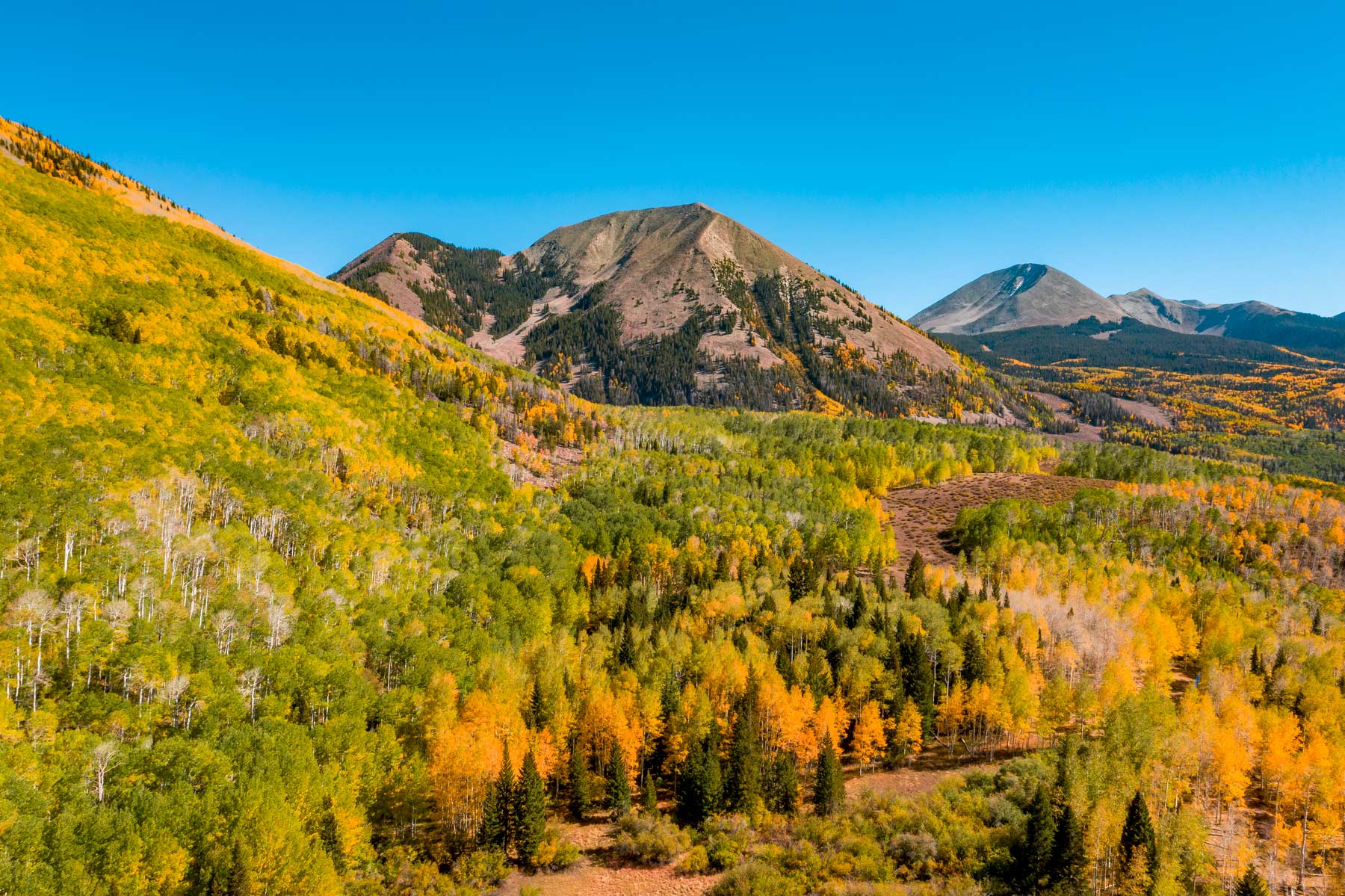
Recreational Opportunities
- Mountain Biking
- Climbing
- Fishing
- Hunting
- OHV Driving (ATVs, Dirt bikes, etc)
- Horseback Riding
- Hiking
- Camping
- Boating (kayaking, canoeing, motors, etc)
- and so much more
RELATED: ALL of Utah’s National Parks RANKED
Things to Know Before You Visit the Manti-La Sal National Forest
Map: We used this one.
Downloadable Visitor Guide (courtesy USFS)
Entrance Fees: There are no entrance fees to get into the Manti-La Sal National Forest. This is pretty typical for national forests. Some areas are designated fee areas but by and large no fees are required here. If you’d like to be on the safe side you can purchase the America the Beautiful Pass (which can be found at the entrance gates to most national parks or online here). This pass gets you into all National Parks, Forests, Monuments, and more including 2,000 sites for free after a one time $79 fee (annual pass).
Fire Safety: Keeping the Manti-La Sal pristine is easier than you think and it starts with fire safety. Fireworks are never a good idea on National Forests as they routinely start blazes. Be sure to check with the forest’s official page to learn more about current fire restrictions.
Native Artifacts: The Manti-La Sal is home to some incredible native sites, many of which include artifacts. Please respect these places and leave them how you found them. Altering these sites in any way (including taking artifacts) is illegal – so just don’t do it. For more visit the Bears Ears Education Center.
Visit with Respect: We need to keep this forest Forever Mighty. View Visit Utah’s educational hub to make sure you’re prepared for this experience, including Leave No Trace principles, how to backcountry camp, fire safety and more.
Sunscreen: For many of us visiting national forests in the summer means lots of sun. Seriously, some of these parks can zap you if you don’t wear sunscreen. We happen to like this one because it works AND it’s not full of a bunch of chemicals.
Insect Repellent: You hope not to need it, but you want to have it. We typically bring an Eco-Friendly Insect Repellent with us just in case.
Dogs are allowed in national forests including the Manti-La Sal.
Details About Manti-La Sal National Forest
Location: Southern Utah
Closest City: Moab (among others)
Established: May 29, 1903
Size: 1,270,886 acres
Native Land: Hopi, Navajo, Northern Ute, Pueblo of Zuni, Southern Paiute, Ute Mountain Ute
Entrance Fees: Free
Manti-La Sal National Forest Maps (3)
Ferrion-Price Sanpete Ranger District Map

Moab Ranger District Map
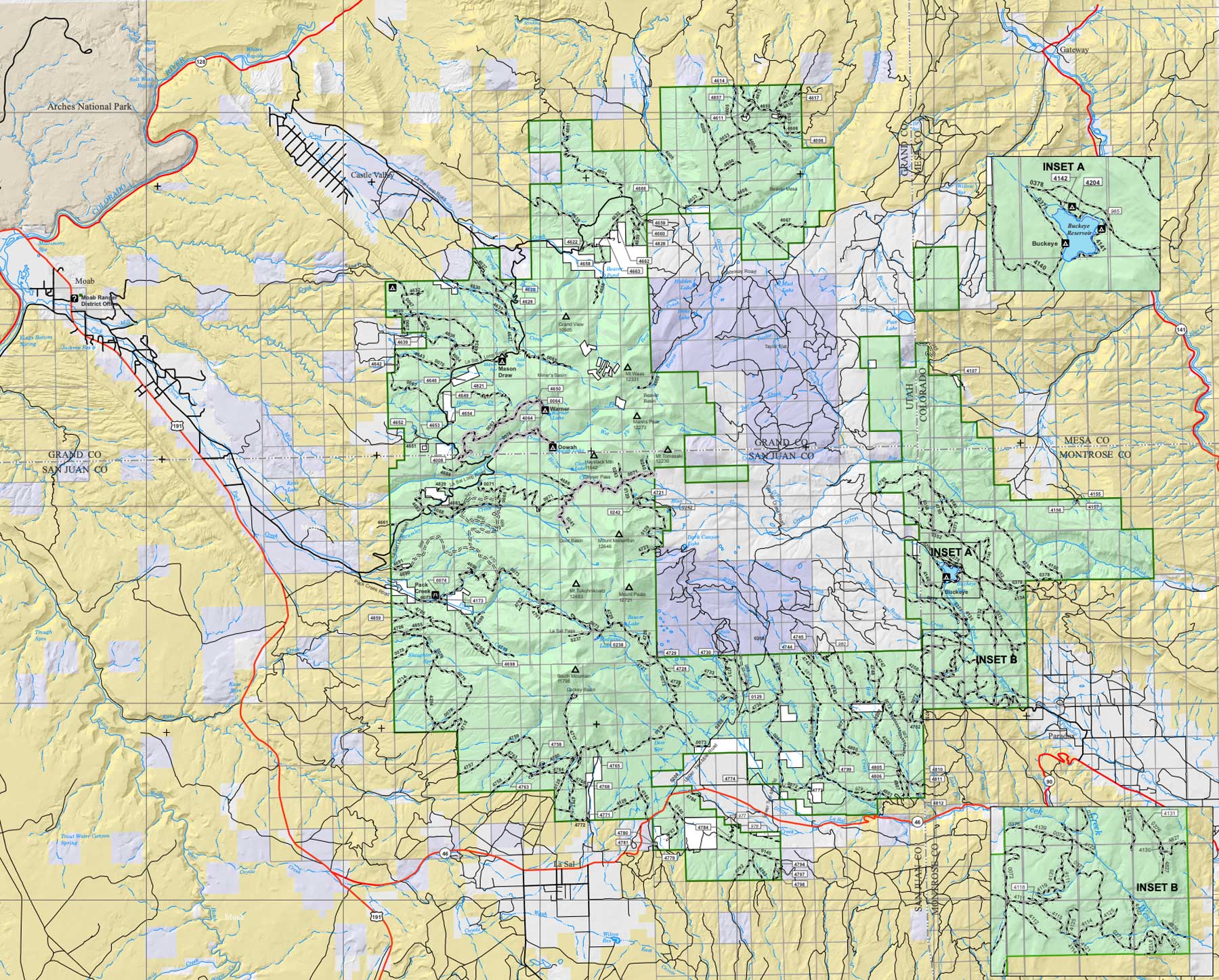
Monticello Ranger District Map
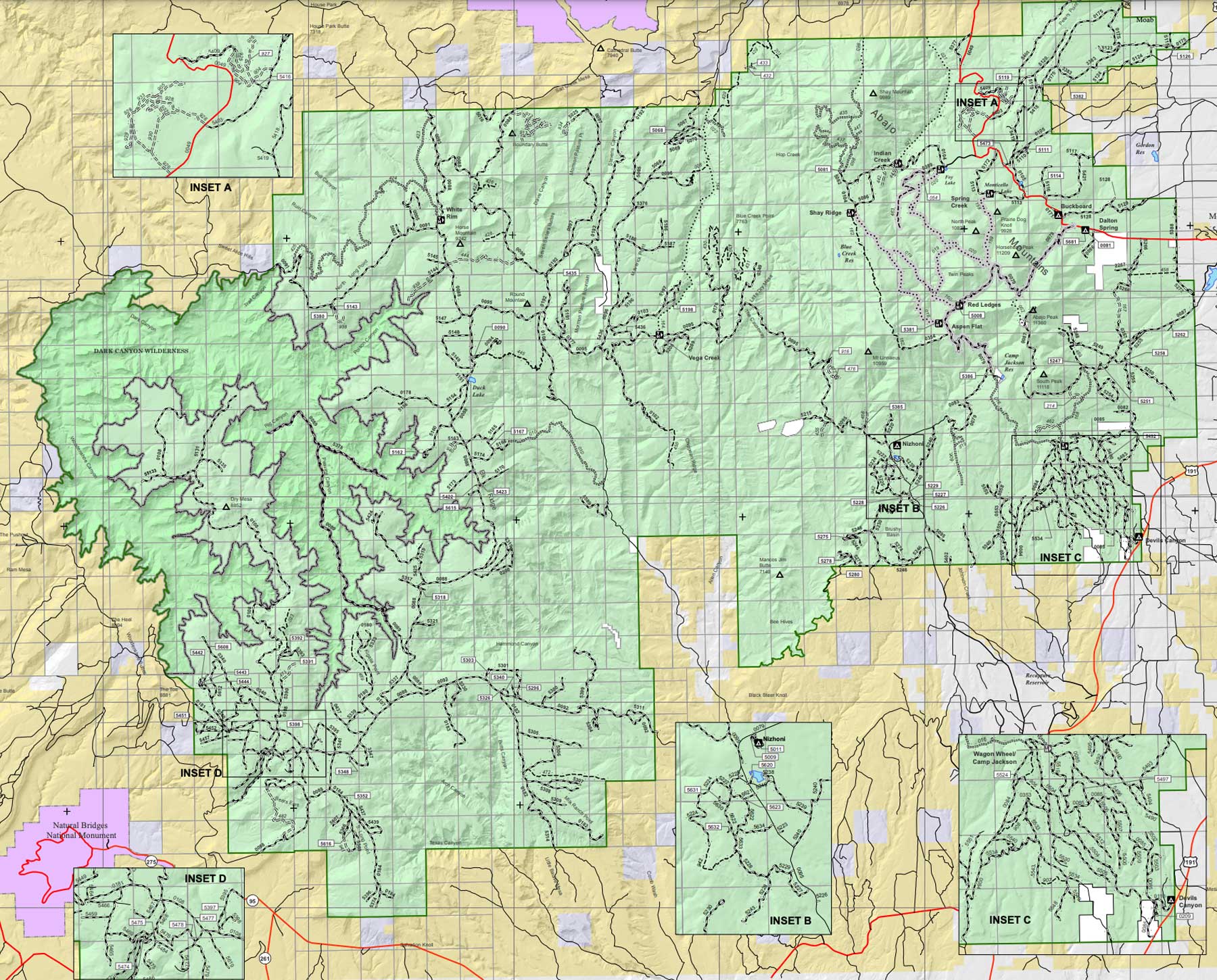
Where is the Manti-La Sal National Forest?
The Manti-La Sal National Forest is located in southern Utah over 4 different ranger districts featuring different topography.
Ranger Districts
- Moab Ranger District
- Ferron-Price Ranger District
- Sanpete Ranger Districts
- Monticello Ranger District
Getting to the Manti-La Sal National Forest – Directions & Location
The Manti-La Sal National Forest is spread out with different ranger districts all over southern Utah. Getting to the forest depends on which part you’re trying to access.
Closest Airport (to Moab District): GJT – Grand Junction Regional Airport (distance – 100 miles from the Moab Ranger District)
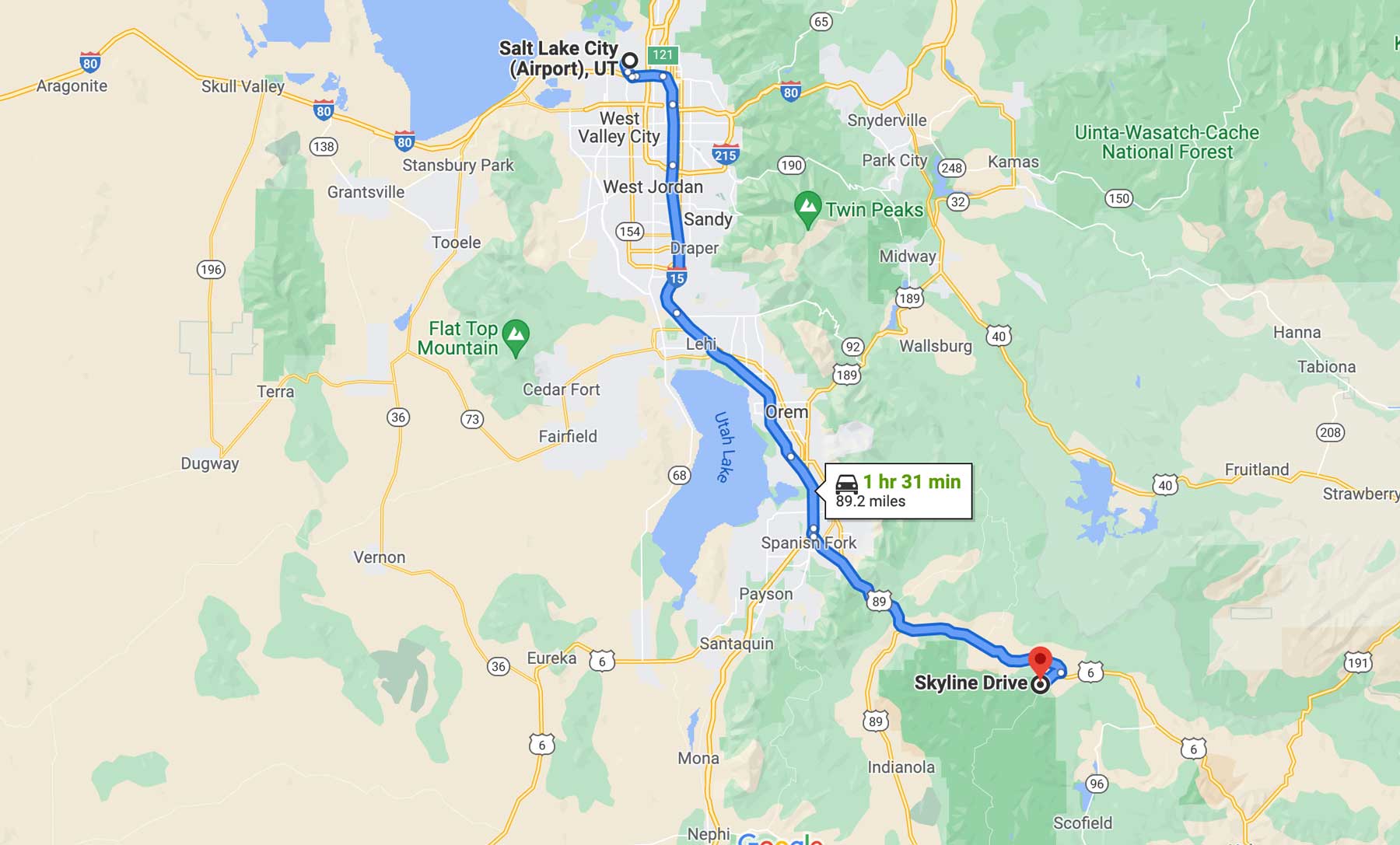
Closest Airport (to Ferrion-Price District): SLC – Salt Lake City International Airport (distance – 90 miles from the Ferrion-Price District)
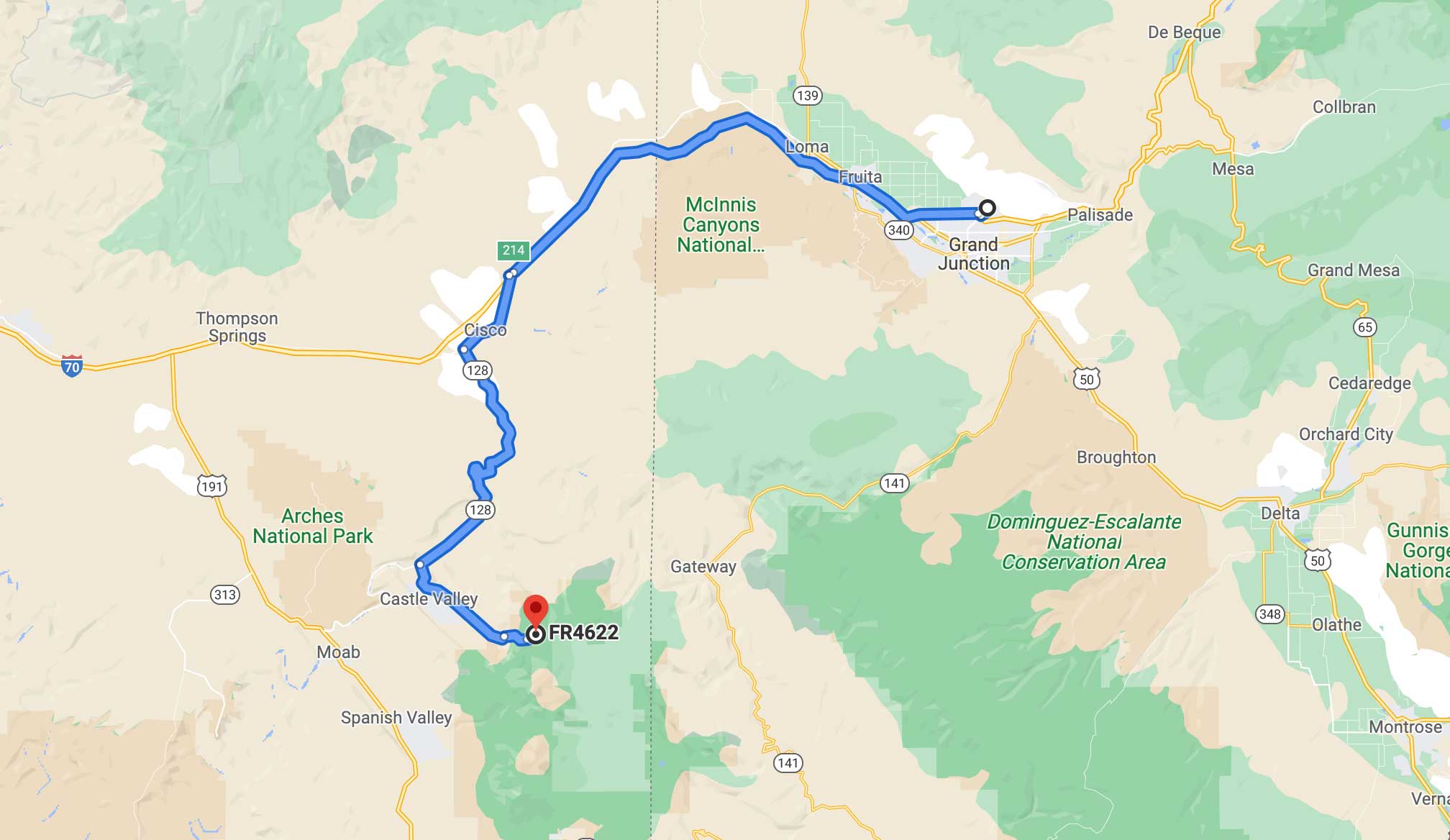
The best way to get to the Manti-La Sal is typically flying into Salt Lake City (SLC) and driving to the forest.
Depending on which part of the forest you are trying to visit will determine the drive time but typically somewhere from 90 minutes to the Ferrion-Price Ranger District to 4 hours to the Moab Ranger District.
RELATED: UTAH National Parks ROAD TRIP: An Epic Guide + Overlooked Spots
Watch the Award-Winning Manti-La Sal Video
About the Video
Larger than all of Utah’s national parks combined, the Manti-La Sal National Forest features jaw-dropping natural beauty and unparalleled recreational opportunities.
To make this film we spent weeks in Utah’s Manti-La Sal National Forest during the end of September and beginning of October to try and catch the spectacular fall foliage. We were not disappointed.
Whereas most of Utah’s National Parks do not have much in the way of fall foliage (except for Zion & Capitol Reef), the Manti has some of the most breathtaking autumn beauty anywhere in the world.
RELATED: 14 BREATHTAKING National Park Videos to Inspire Your Next Trip
Best Time to Visit the Manti-La Sal National Forest
The best time to visit the Manti-La Sal National Forest is during Fall when the park has sufficiently cooled down, crowds are down, and the foliage is jaw-dropping.
The Manti is a very overlooked and lesser traveled fall destination which means most of the forest you’ll have to yourself.
I recommend visiting between late September and mid-October for the peak fall foliage.

RELATED: 16 STUNNING Things To Do in Death Valley
Manti-La Sal National Forest Seasons
Spring on the Manti-La Sal National Forest
Spring is a great time to visit the Manti-La Sal as temperatures are cool, crowds are down, and the deciduous parts of the forest comes back to life.
As a rule of thumb, the later into Spring the better the weather will be which means more accessible forest recreational opportunities.
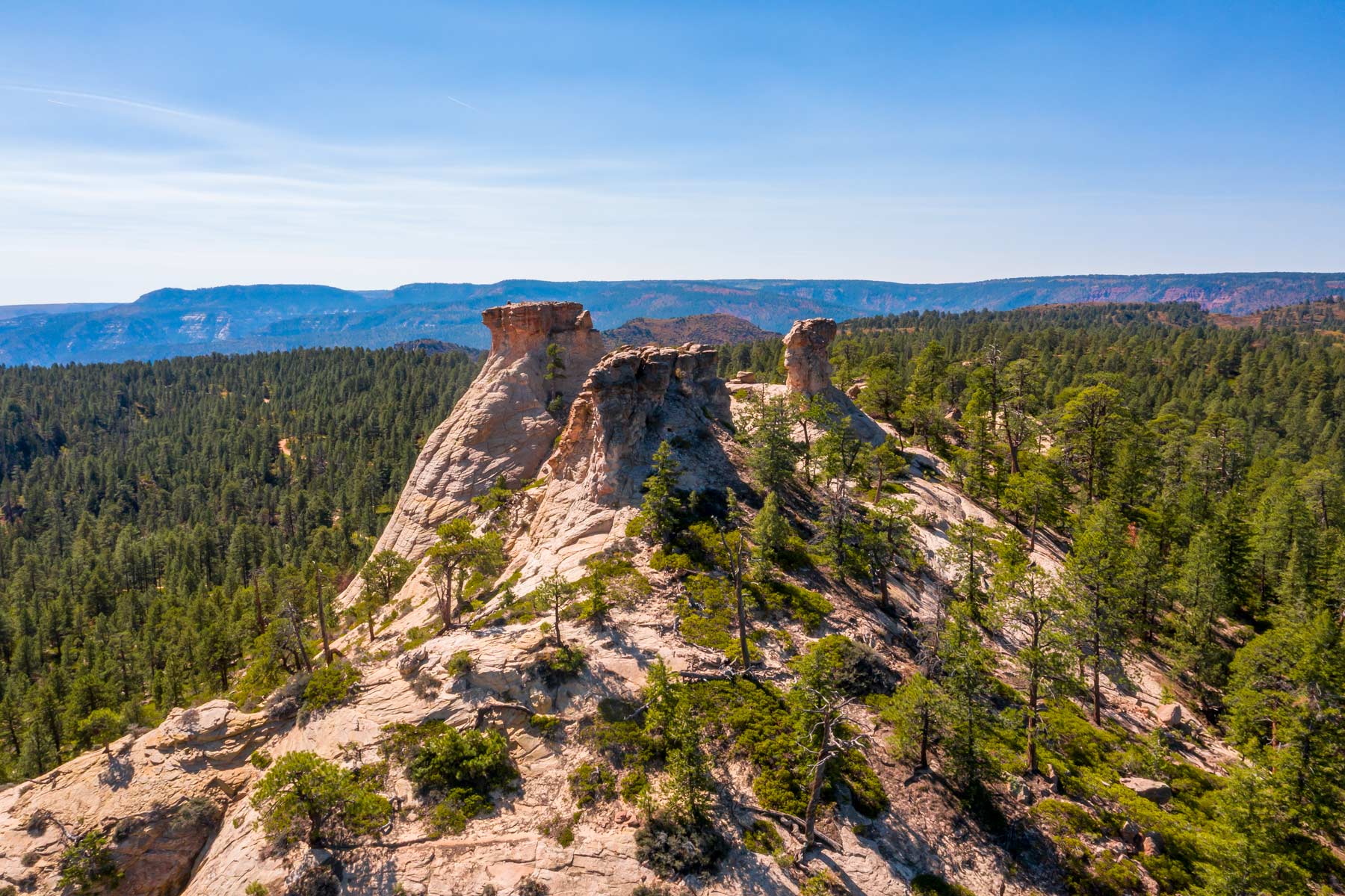
Summer on the Manti-La Sal National Forest
Summer is a great season to visit the Manti-La Sal National Forest. Temperatures range from warm to downright hot so make sure to pack and dress accordingly.
Summer is the most popular time to visit the forest so crowds will be up but still nowhere close to what you will see in the national parks.
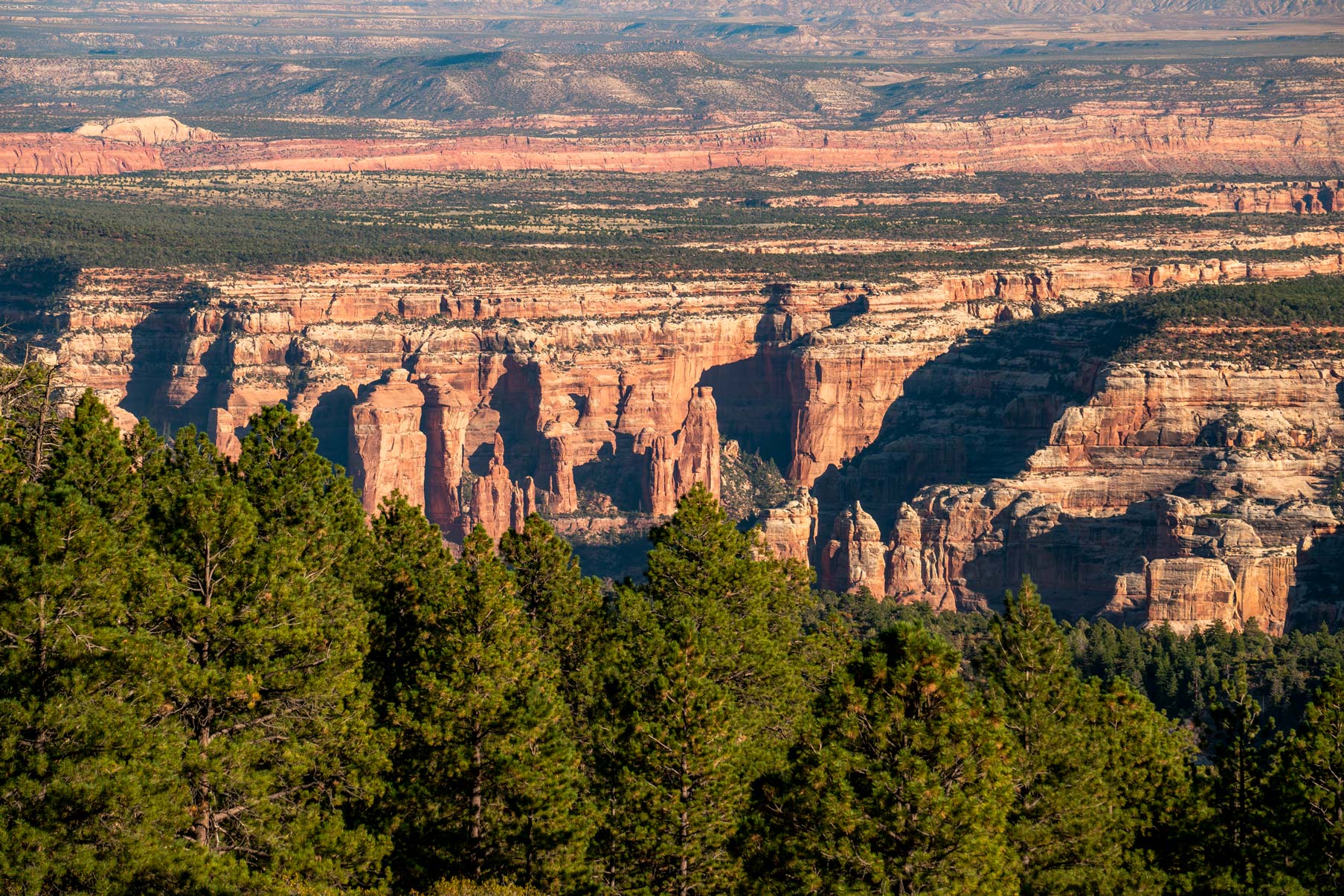
Fall on the Manti-La Sal National Forest
Fall is the best time of year to visit the Manti-La Sal. Crowds are down during the fall and the autumn foliage is world-class.
The Abajo Mountains and La Sal Mountains are full of aspen forests that explore with golds, yellows, and oranges. Skyline Drive is another great spot to soak in the leaf-changing season.
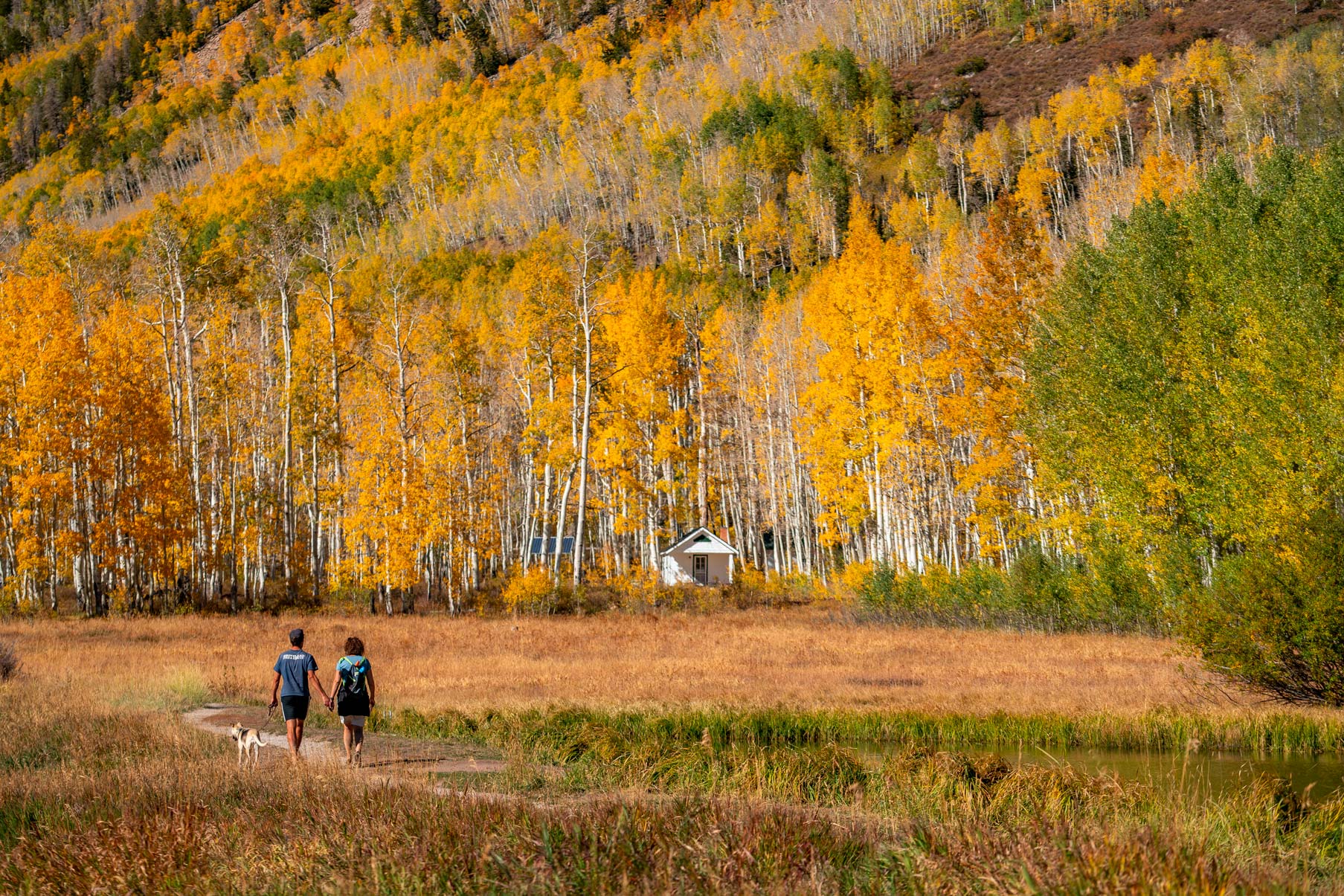
RELATED: 10+ Must See National Parks This Fall (A Stunning Guide)
Winter on the Manti-La Sal National Forest
Winter is cold and snowy on the Manti-La Sal National Forest. If you love winter sports then you can find plenty of great winter recreation opportunities all over the forest.
Best Things to Do On The Manti-La Sal National Forest
Catch a Sunset at Warner Lake
Warner Lake is one of the most picturesque lakes in all of the Manti-La Sal. The lake itself is situated amongst the most striking of the La Sal mountain range and what it lacks in size it makes up for in scenic beauty.
Sunset is an especially great time to soak in the lake’s serene beauty as the final light of the day sweeps across the La Sal Mountains.

2. Camp Out on Porcupine Rim
Porcupine Rim is one of the most scenic campgrounds in the world offering sweeping, panoramic views of Castle Valley. There are campsites situated ON the ledge of the valley with sheer drop offs so be careful when leaving the tent at night!
The campground is located off a dirt road that is mostly passible but to get to the *best* sites requires a 4WD high-clearance vehicle – and we do mean high-clearance. If you don’t have 4WD you can park a few hundred yards down the road and carry your camping supplies in.
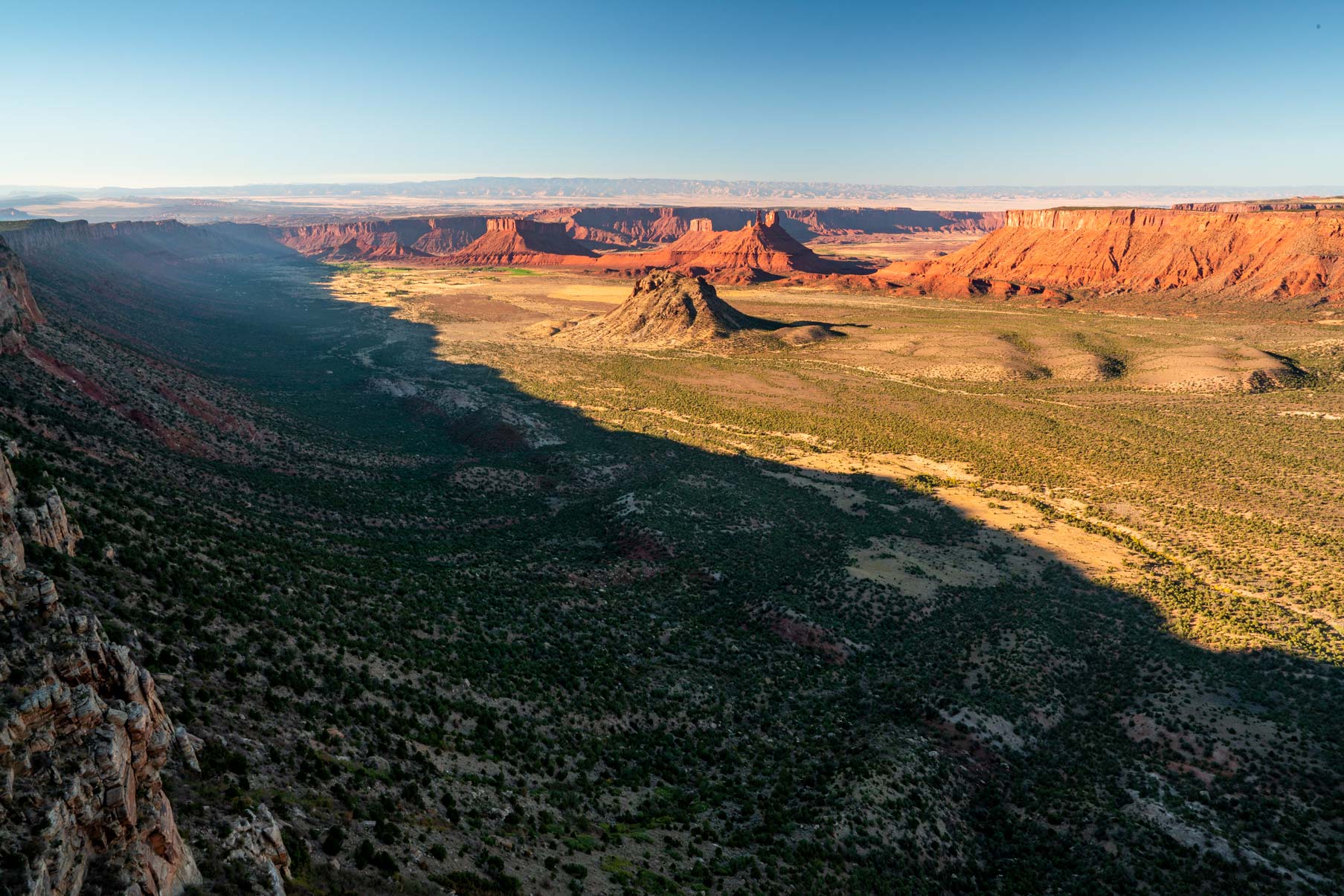
3. Explore the Stunning Bears Ears National Monument
The famous Bears Ears are located within the Manti-La Sal National Forest and are a must-see if you’re in the region. If you plan to visit the Bears Ears, make sure to do so with respect. That means never removing any artifacts, no leaning on walls in sacred sites, practicing Leave No Trace, and more.
The Bears Ears is a sacred site to many native tribes including the Navajo, Hopi, Northern Ute, Pueblo of Zuni, Southern Paiute, Ute Mountain Ute. A great resource to check out prior to visiting (and upon your visit) is the Bears Ears Education Center.
The actual “ears” are two prominent formations (featured in the photo above) that dominate the landscape for miles around. The Navajo believe these buttes to be a sacred site that protects them.
Sunset is the best time to see the ears themselves up close. With that being said, there’s never really a bad time to see them.
NOTE: Cows are currently allowed to graze in the meadows around the ears so drive carefully.
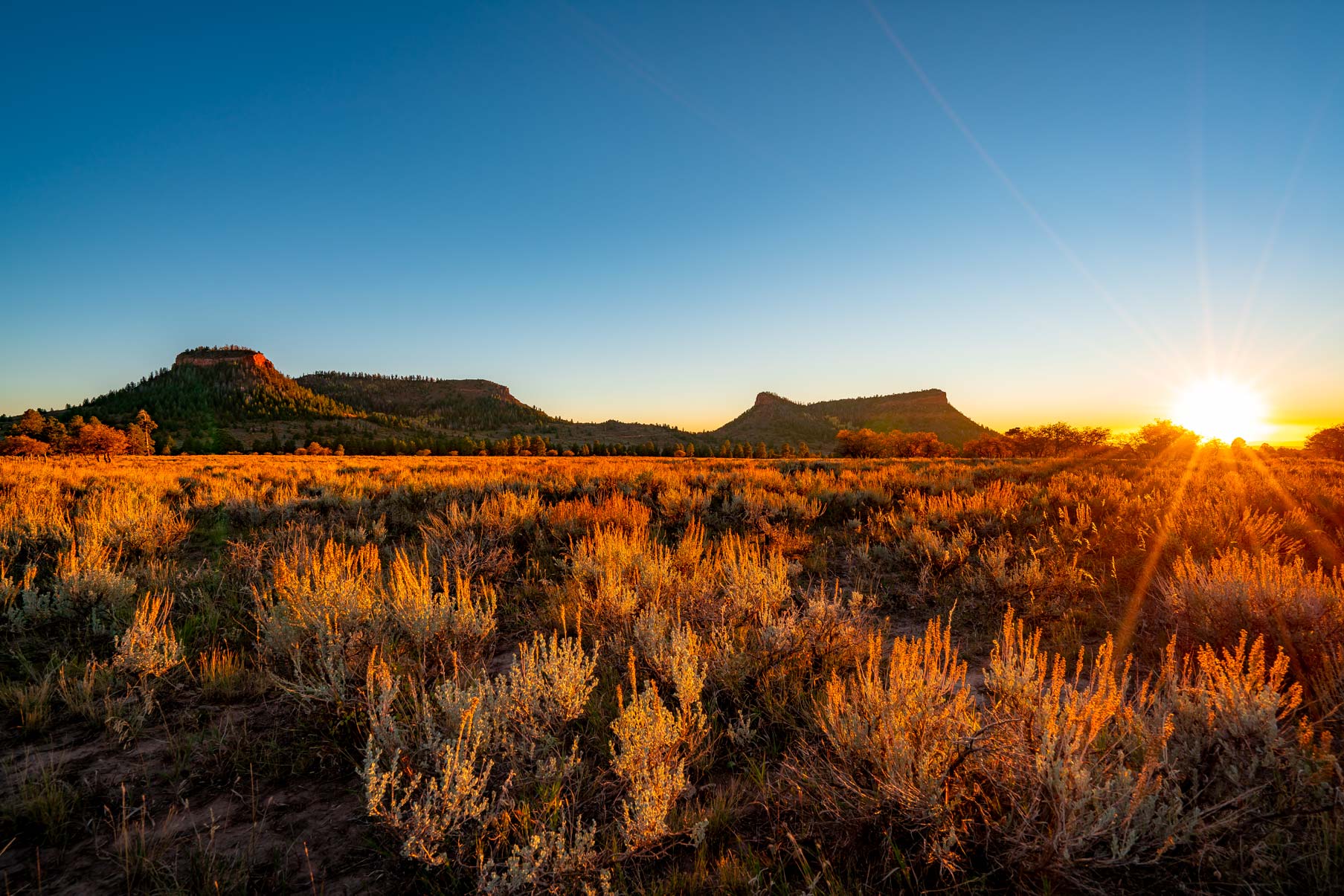
4. Take A Scenic Ride On Skyline Drive
Skyline Drive is one of the most popular roads on the Manti-La Sal National Forest. The road itself is split up into two sections:
- North Skyline Drive | 27 miles – high clearance recommended
- South Skyline Drive | 55 miles – 4WD & high clearance recommended
Sunrises are especially beautiful along this route.
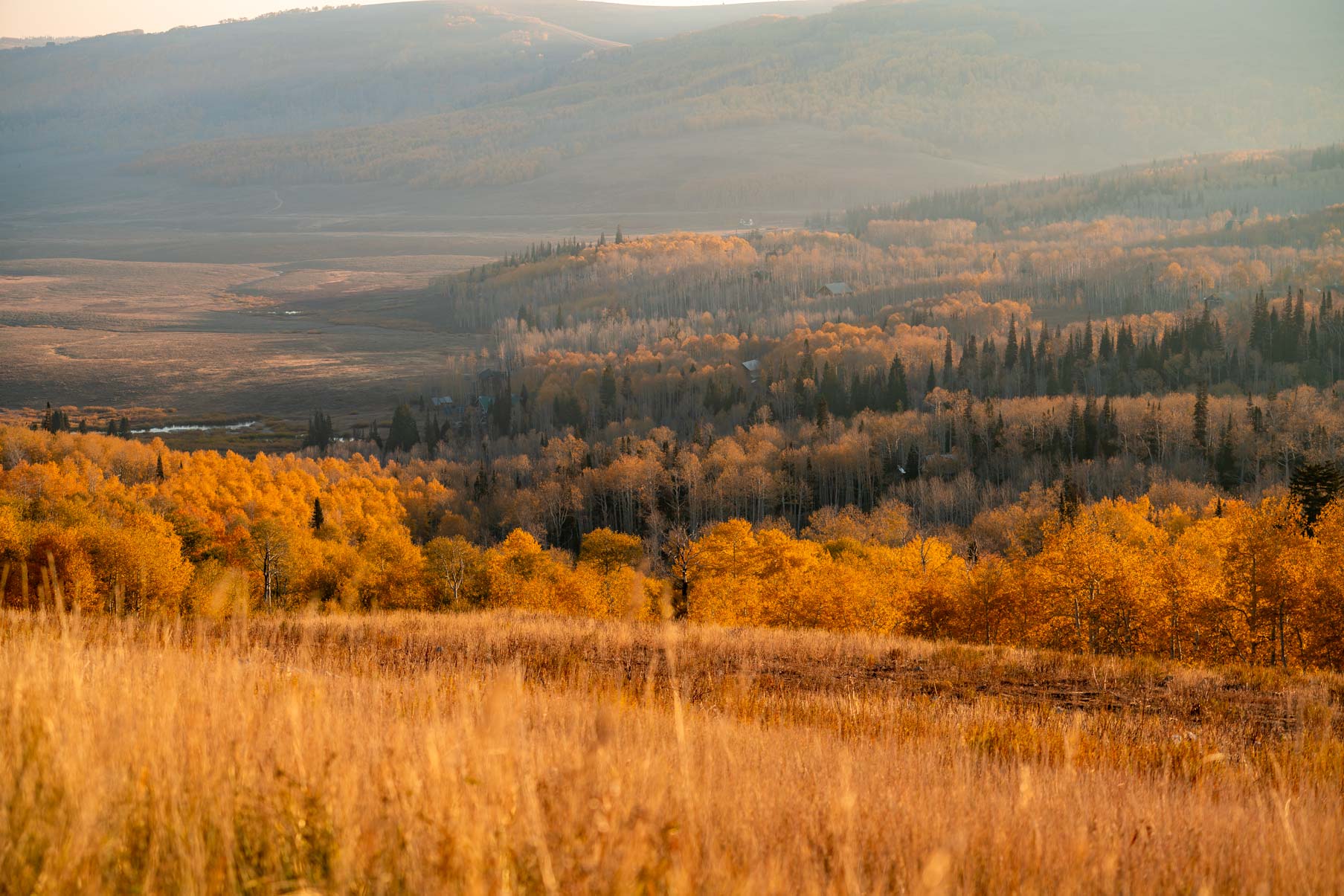
5. See Actual Dinosaur Tracks
Yes, there are actual dinosaur tracks preserved in stone on the Manti-La Sal National Forest. The tracks are located in the Moab Ranger District at the Bull Canyon Overlook pullout.
To get to the tracks, park at the Bull Canyon Overlook parking lot. Upon exiting the car there is a trailhead on the left side of the lot. Take the trail less than 100 yards across a rock face and keep your eyes on the ground.
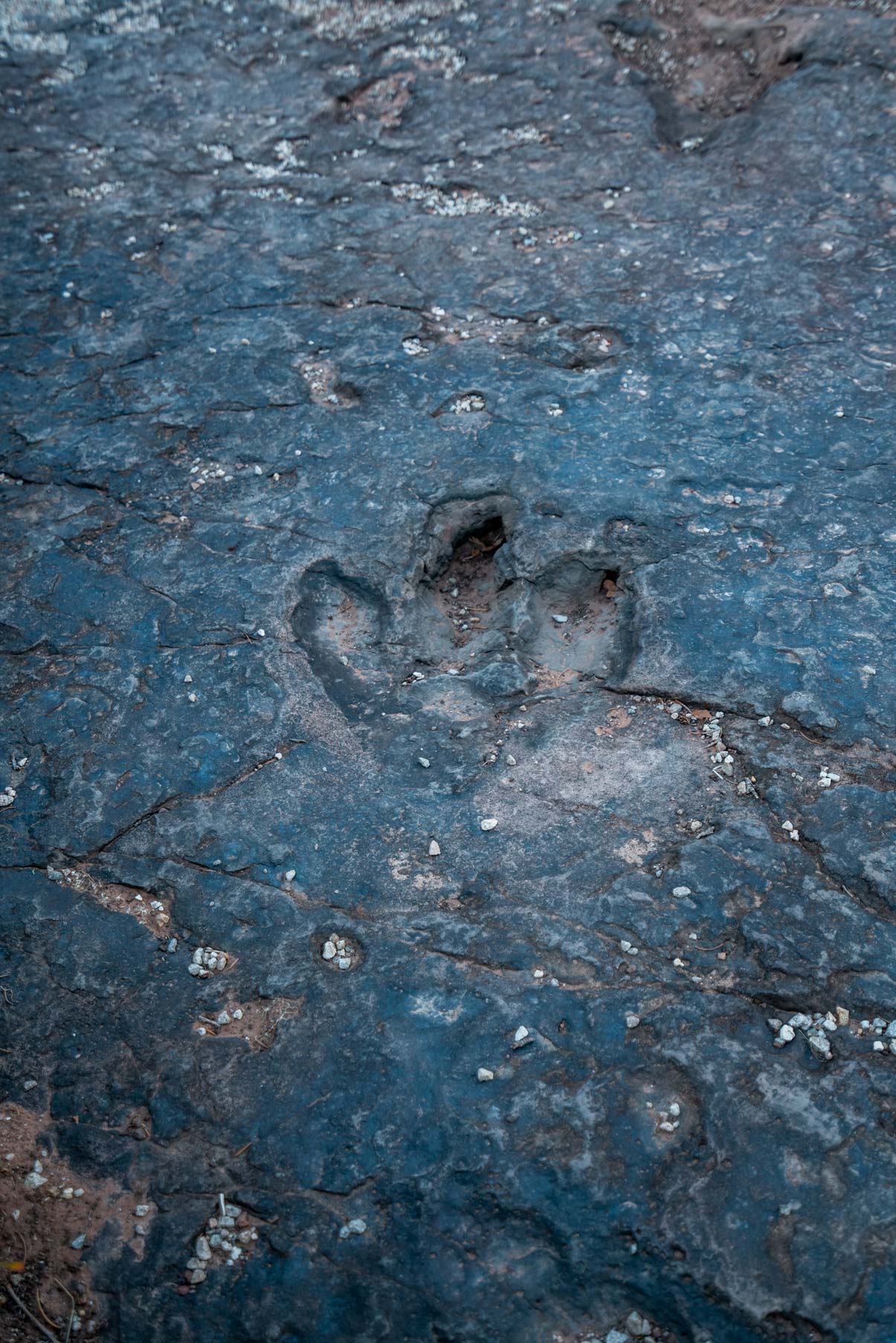
6. Explore Joes Valley Reservoir
Joes Valley Reservoir is home to some world-class fishing and recreational opportunities. Situated at 7,000 feet elevation the reservoir’s location in the mountains makes for stunning scenery as well.
Fish in the reservoir include Brown Trout, Cutthroat Trout, Lake Trout, Rainbow Trout, Splake Trout, Tiger Muskie, Tiger Trout, and Utah Chub.
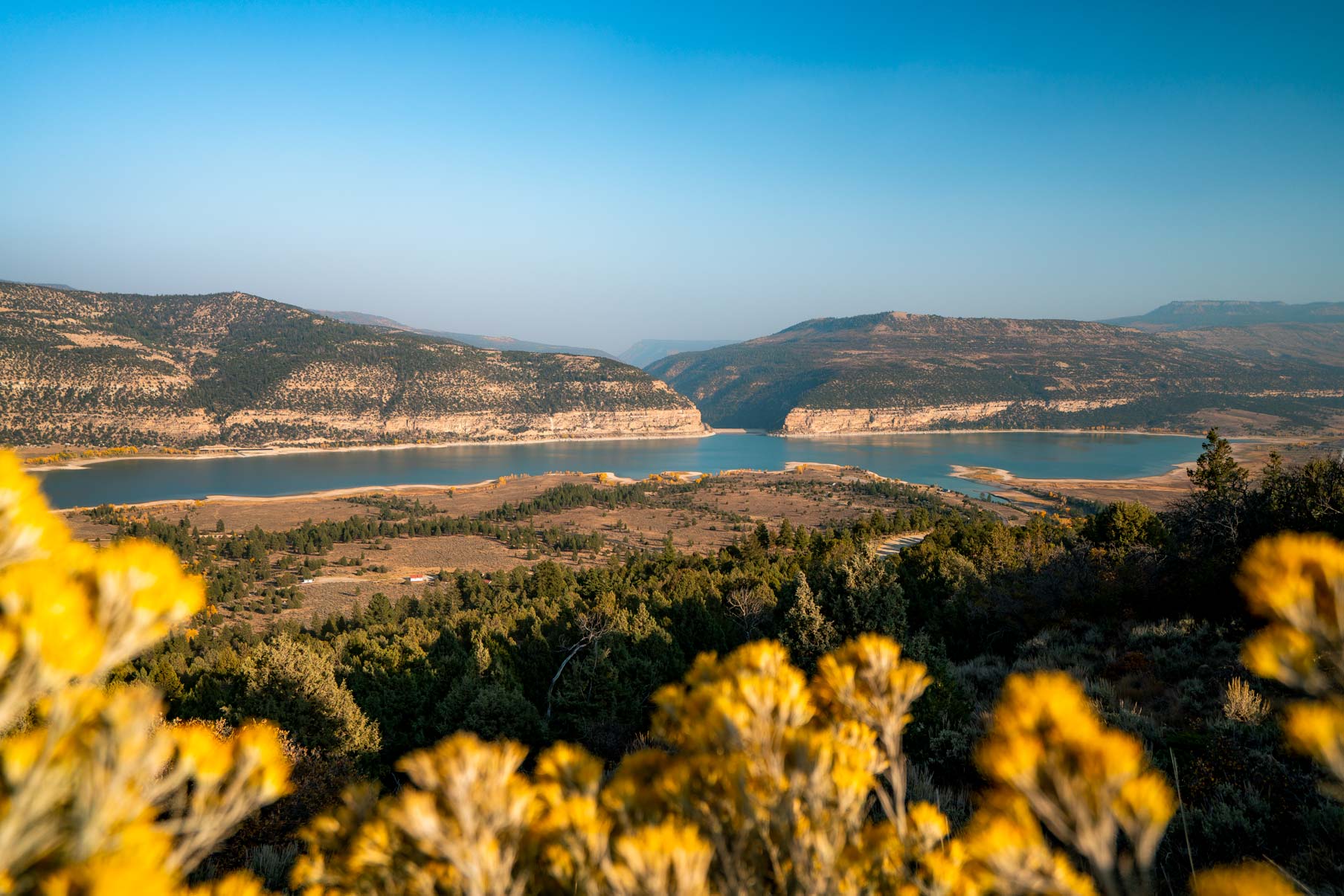
7. Off-Road Adventures
One of the most popular activities on the Manti-La Sal National Forest is off-road or OHV vehicle driving. The forest is full of incredible OHV roads and opportunties.
For the latest OHV road maps visit the USFS website.

Where to Stay on the Fishlake National Forest
Camping & Campgrounds
The Manti-La Sal is home to 32+ developed campgrounds, lots of dispersed camping, as well as 7 rent-able cabins.
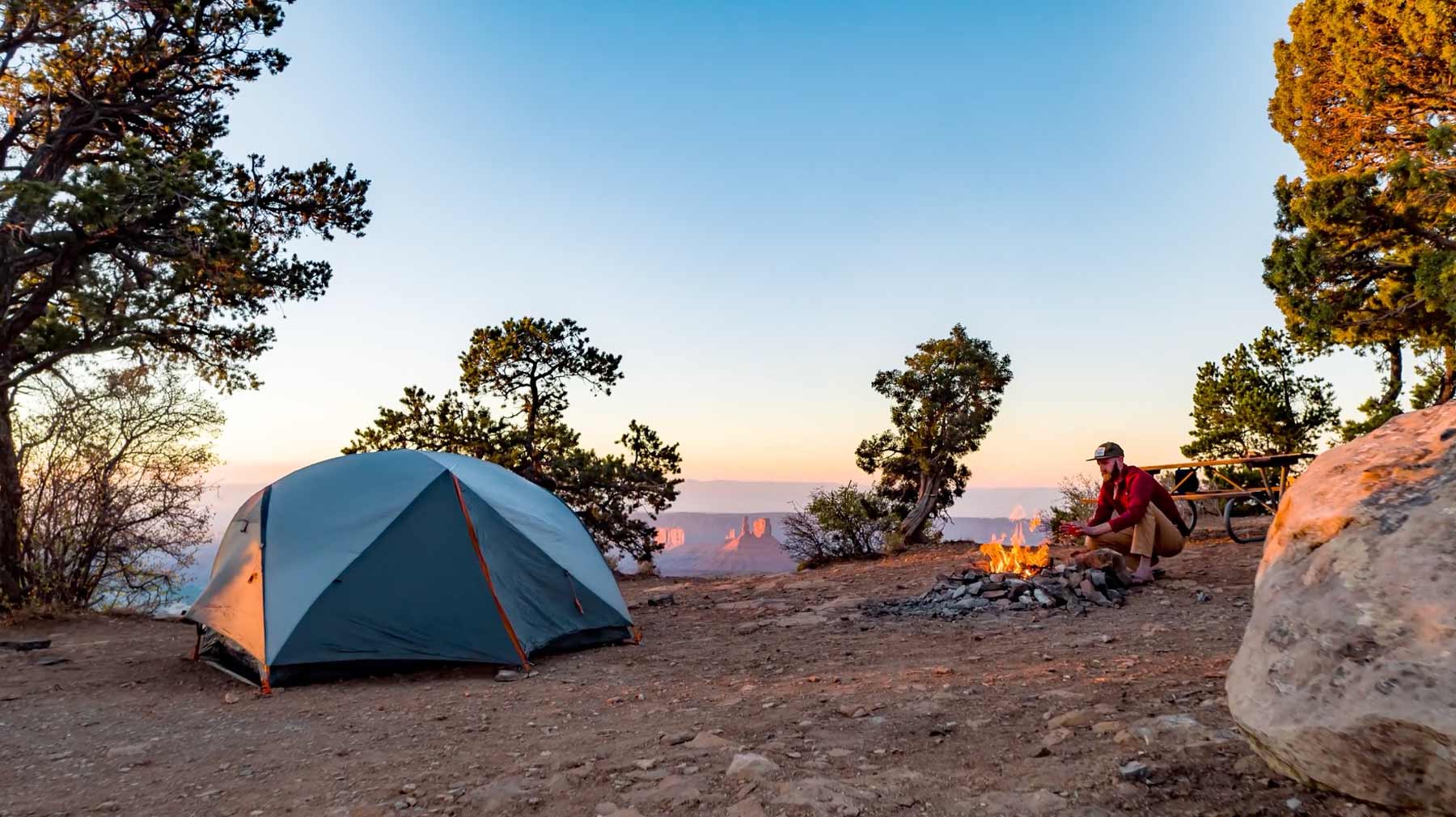
Abajo / Harts Draw
Carpenter Ridge / Buckeye
Ferron / Muddy Creek
La Sal Mountains / Moab
Miller Flat / Joes Valley / Huntington Canyon
- Cleveland Reservoir Campground
- Forks Of Huntington Campground
- Huntington Canyon Recreation Area
- Little Rock Campground
- Lower Little Bear Campground
- River Bend Campground
- The Bridges Campground
- Joes Valley Recreation Area
- Joes Valley Campground
- Lake Canyon Campground
- Miller Flat Reservoir Campground
- Potters Pond Campground
Sanpete South
Sanpitch
Spanish Fork / Scofield
For more about camping on the Manti-La Sal National Forest visit the USFS camping page.
Lodging
Unlike many National Forests, there are no lodges located on the Manti-La Sal. There are 7 rentable cabins however – for more info on those visit the USFS cabins page.
I recommend camping on this spectacular forest. If you’re set on staying inside a hotel with all of the creature comforts, your best bet will be in Moab while visiting the Moab District.
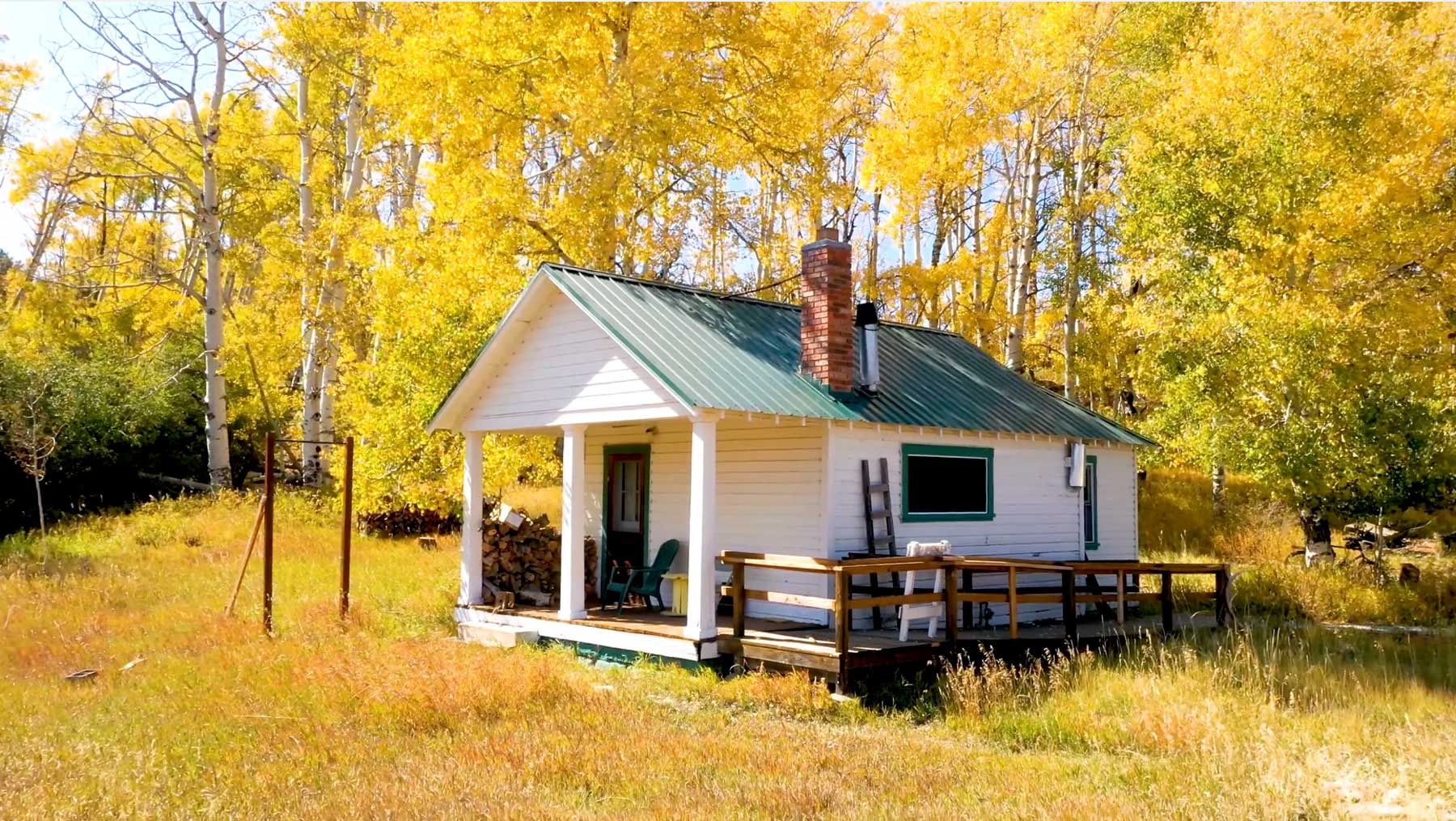
Driving the Manti-La Sal National Forest
I highly recommend a 4WD vehicle if you plan on visiting the Manti-La Sal. This forest has a surprising amount of road access but many of them are high clearance or 4WD only.
Yes, you can get by with a high-clearance vehicle in most of the forest but make sure to read the maps before entering a road you’re unsure about. The forest service does a pretty good job of marking the roads that absolutely require 4WD.
With that being said, these roads are some of the most beautiful in America. Pack your camera and soak in the views!
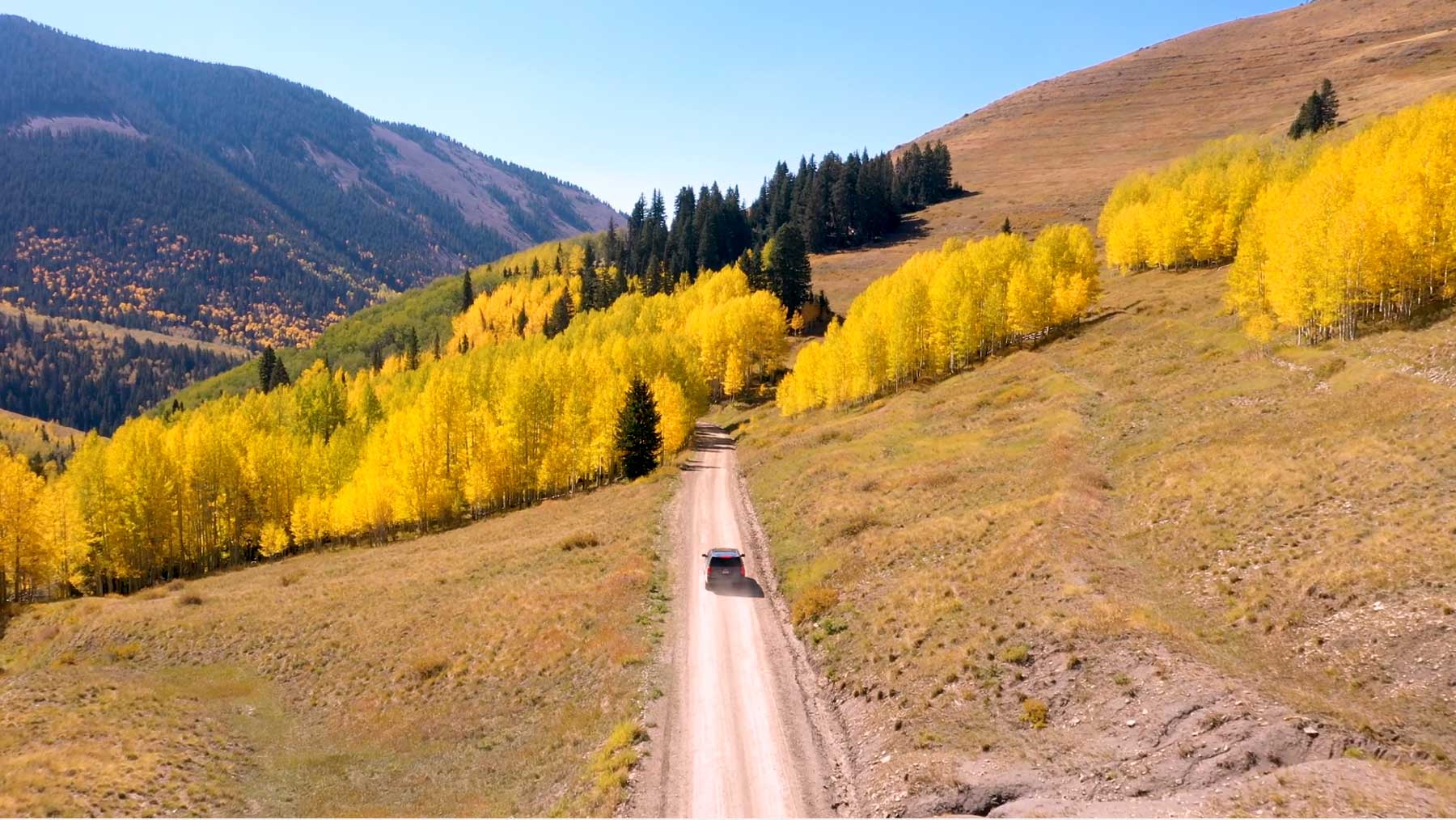
Photos of the Manti-La Sal National Forest
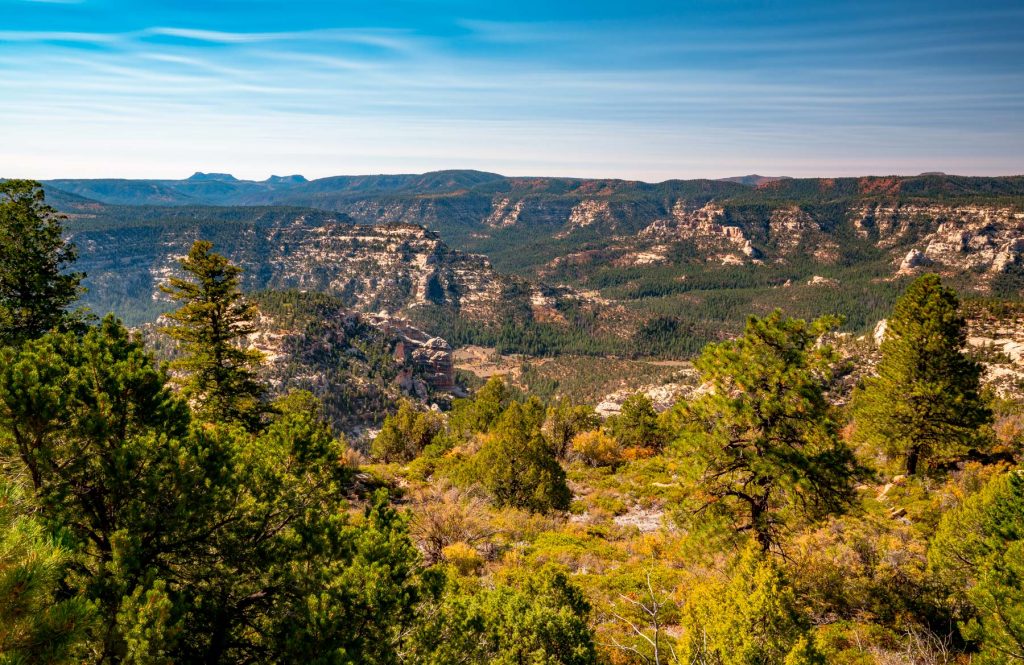
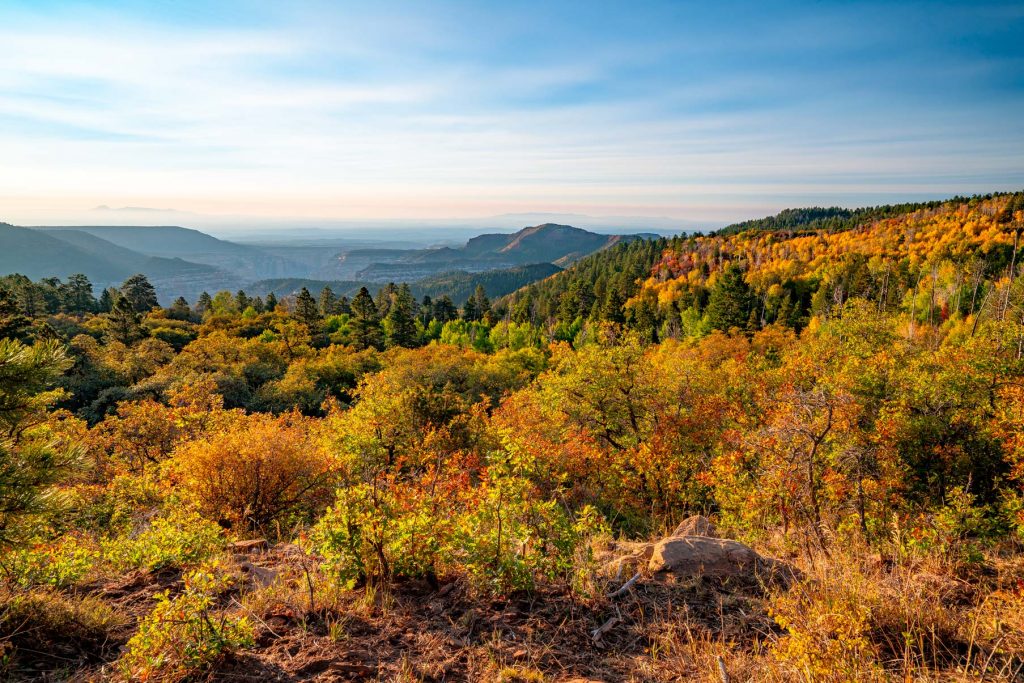
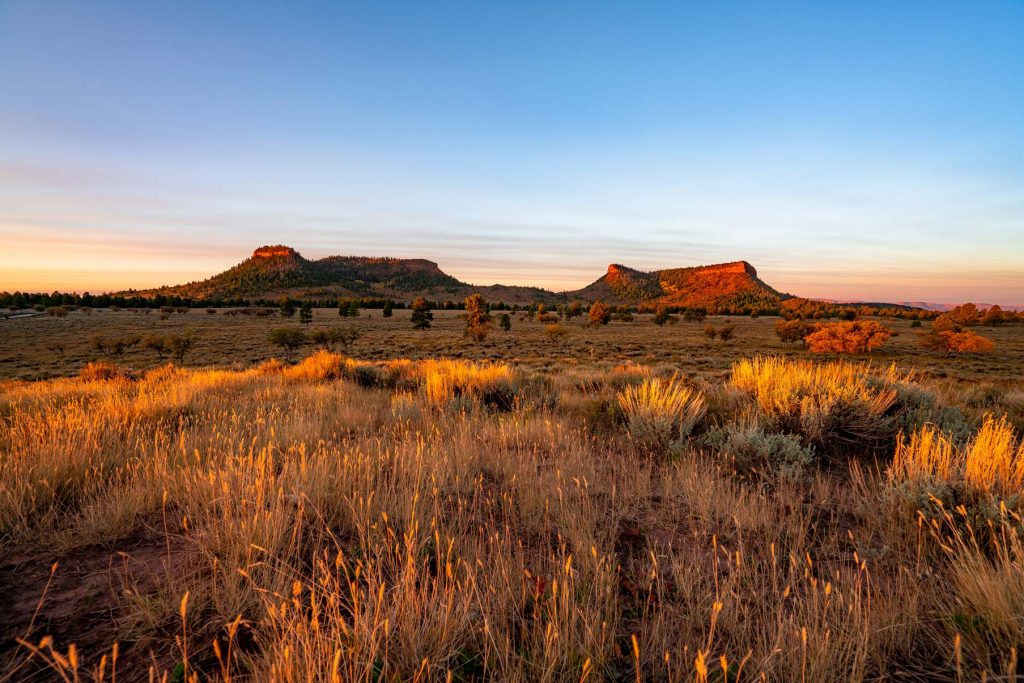
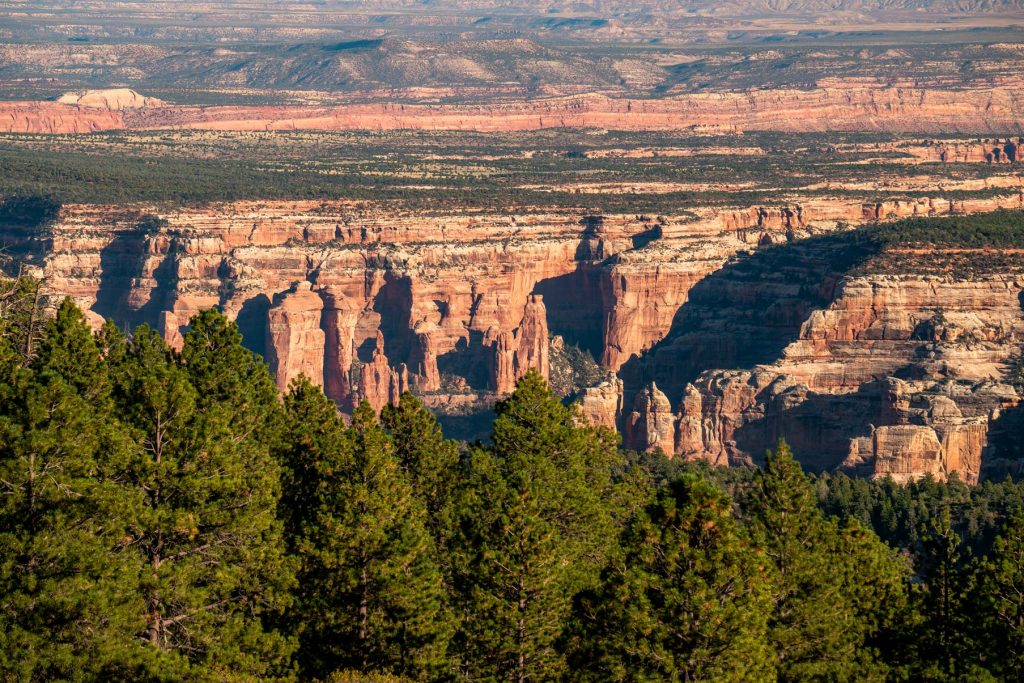

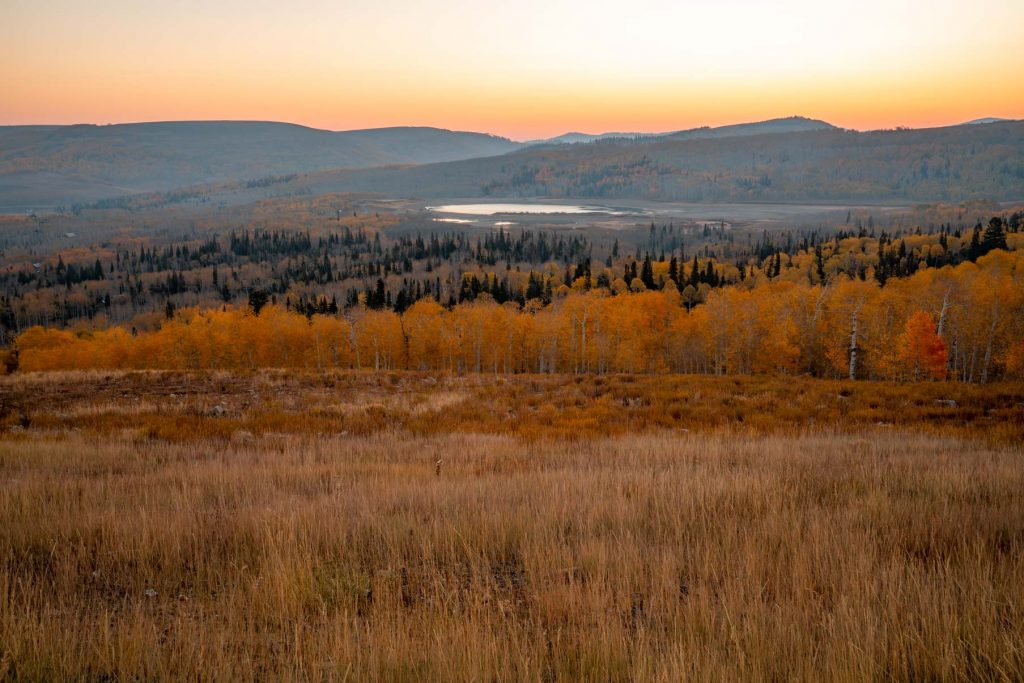
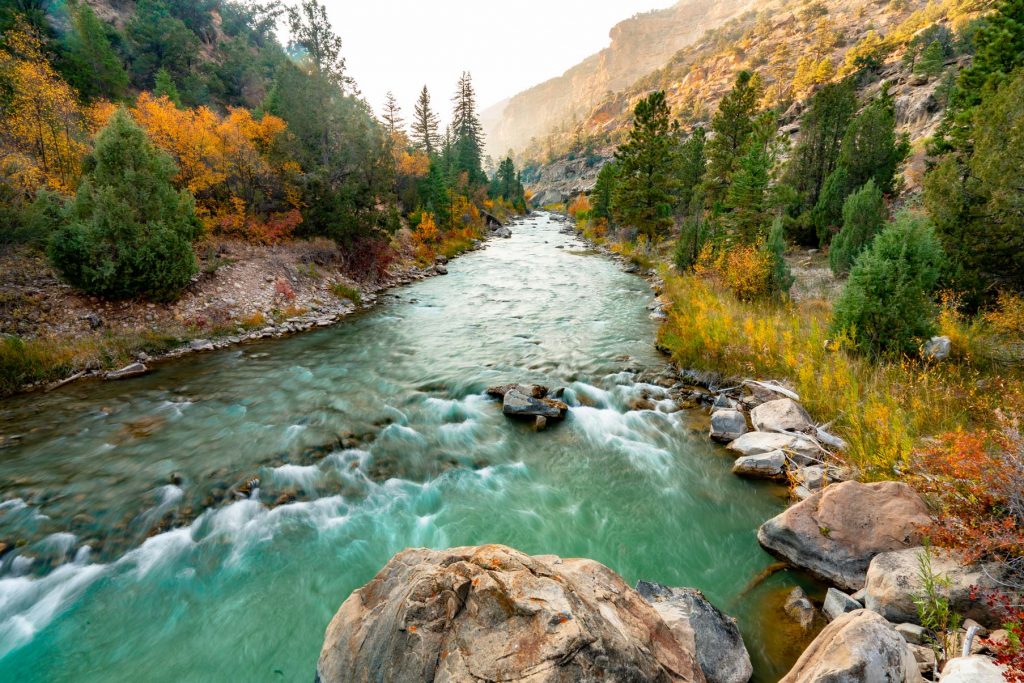

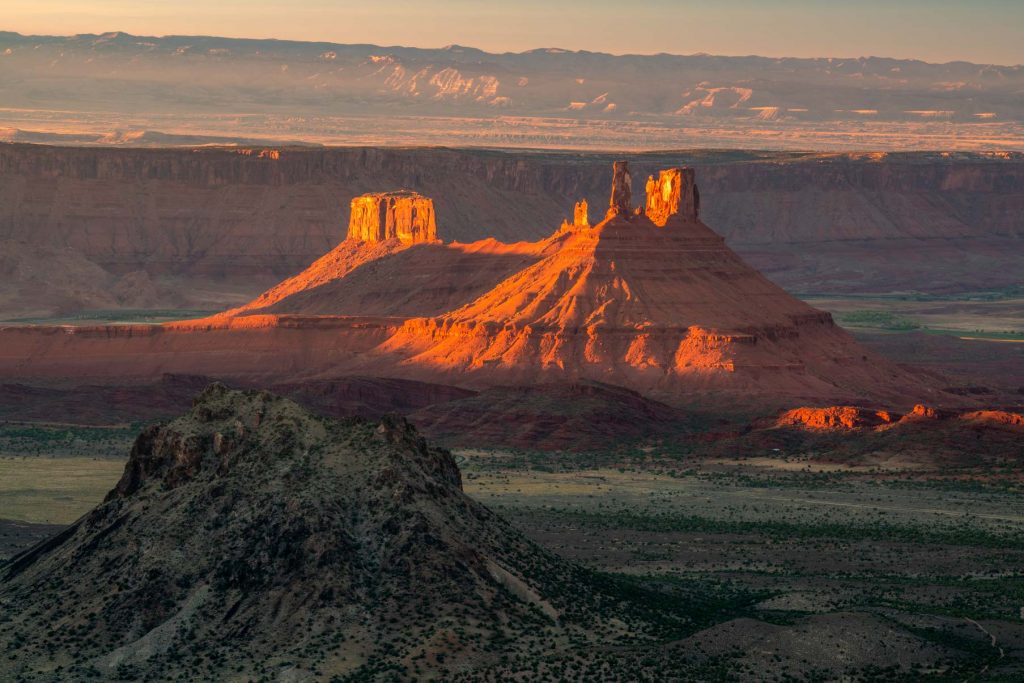
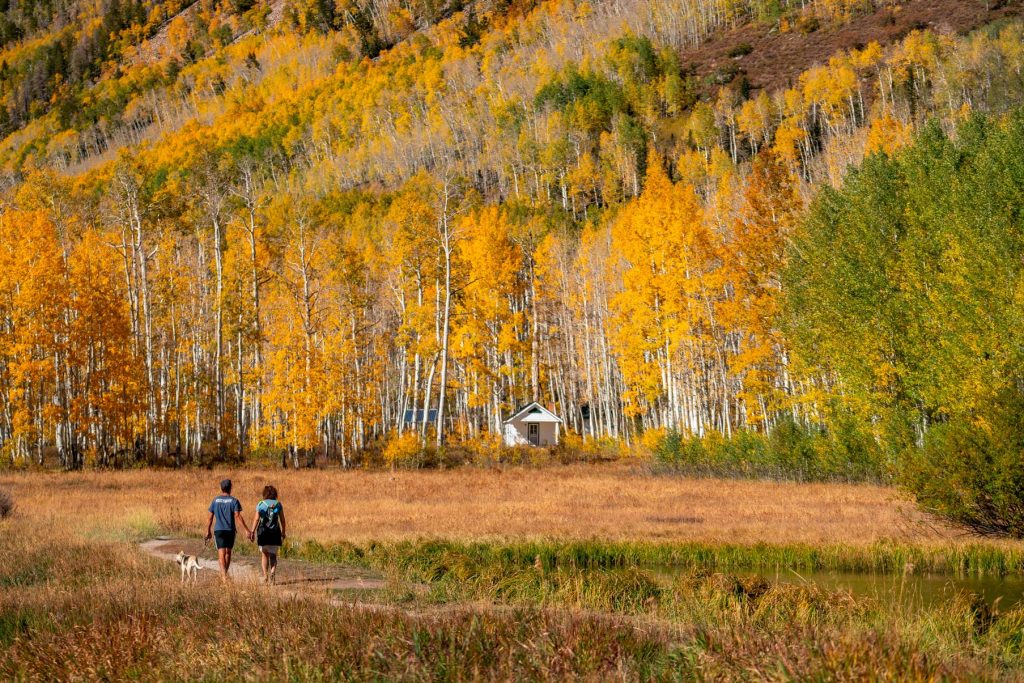
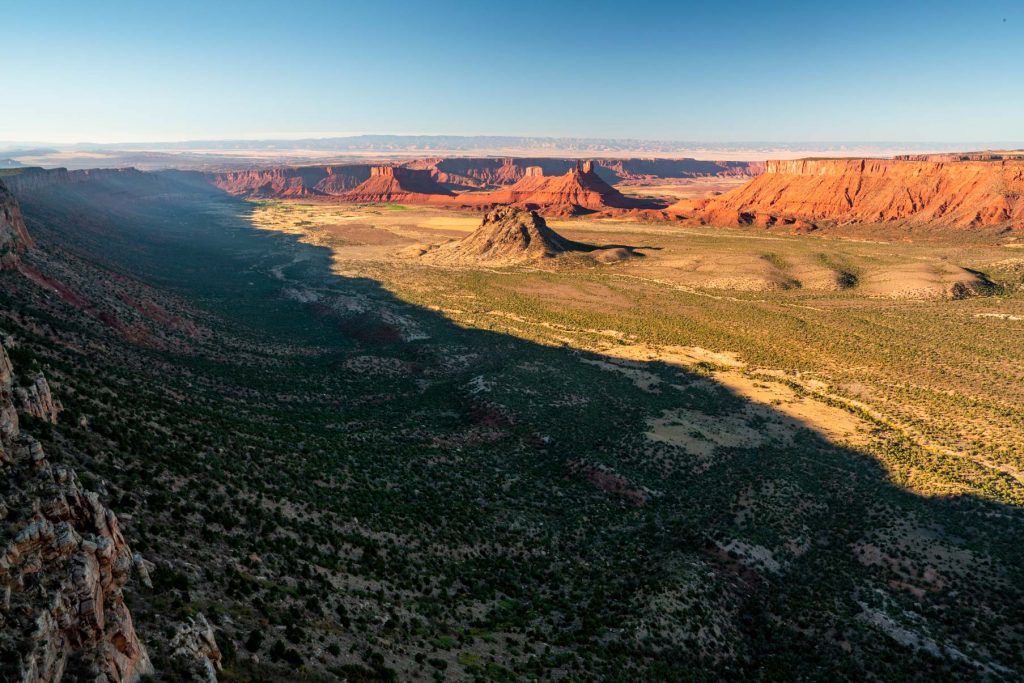
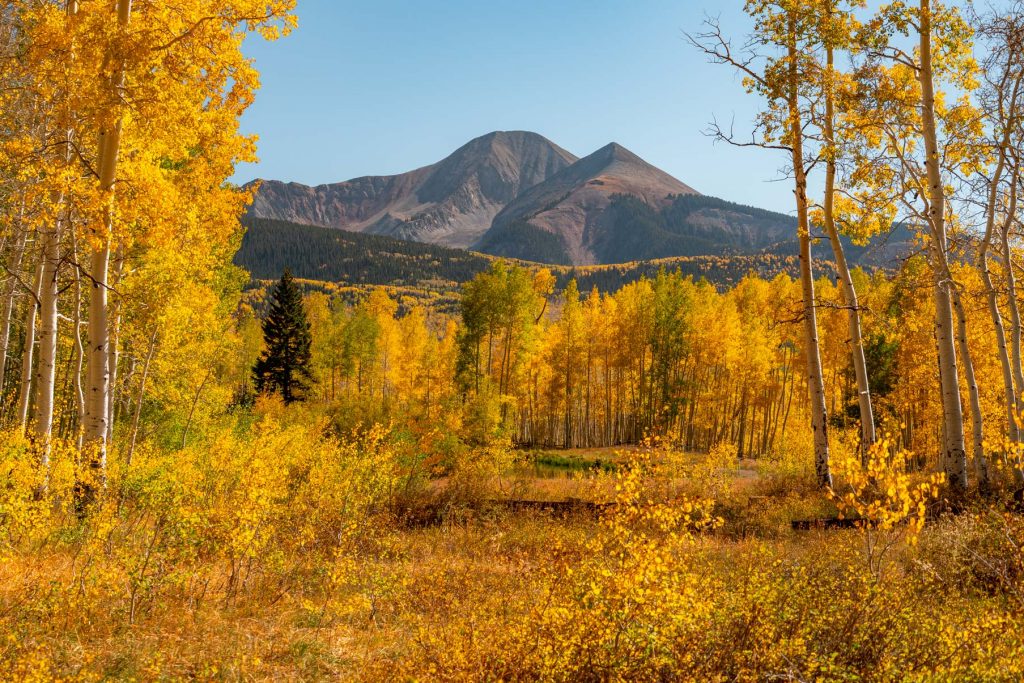
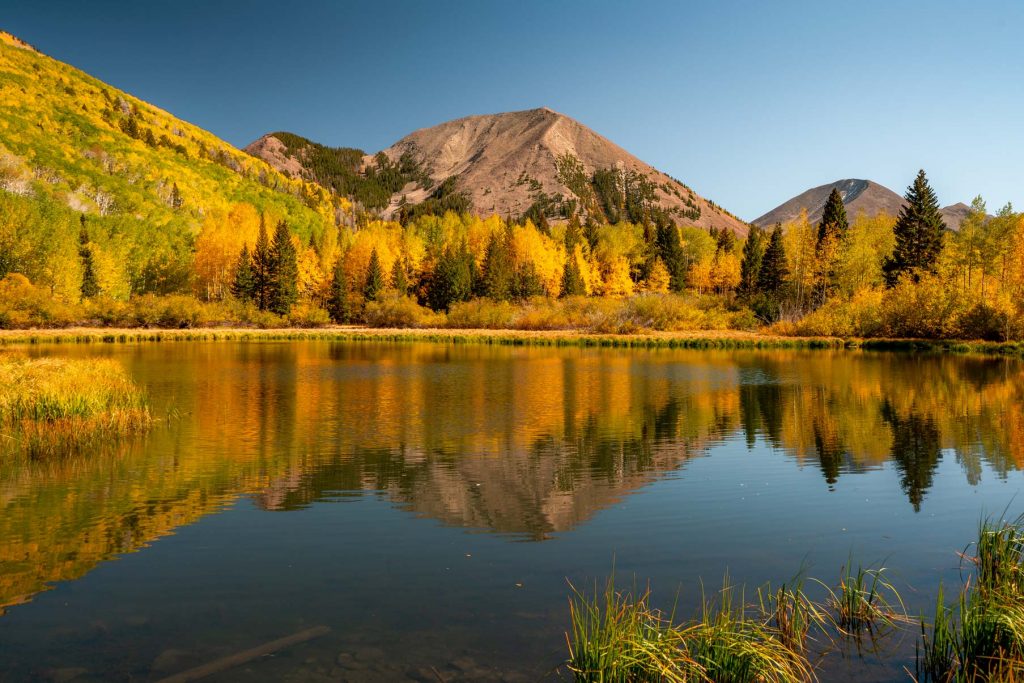
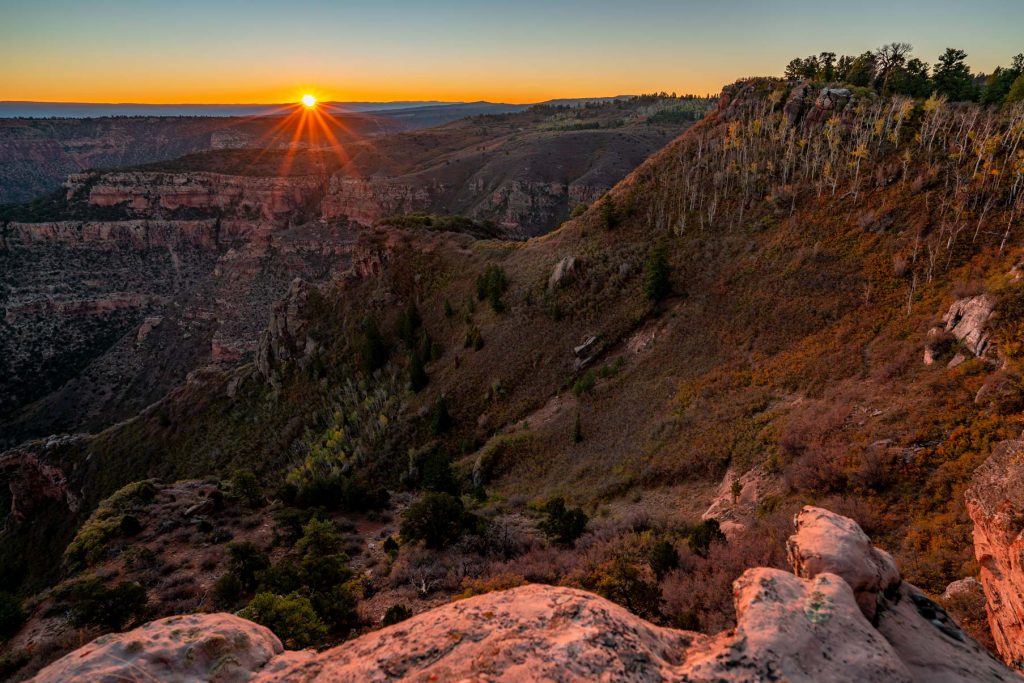
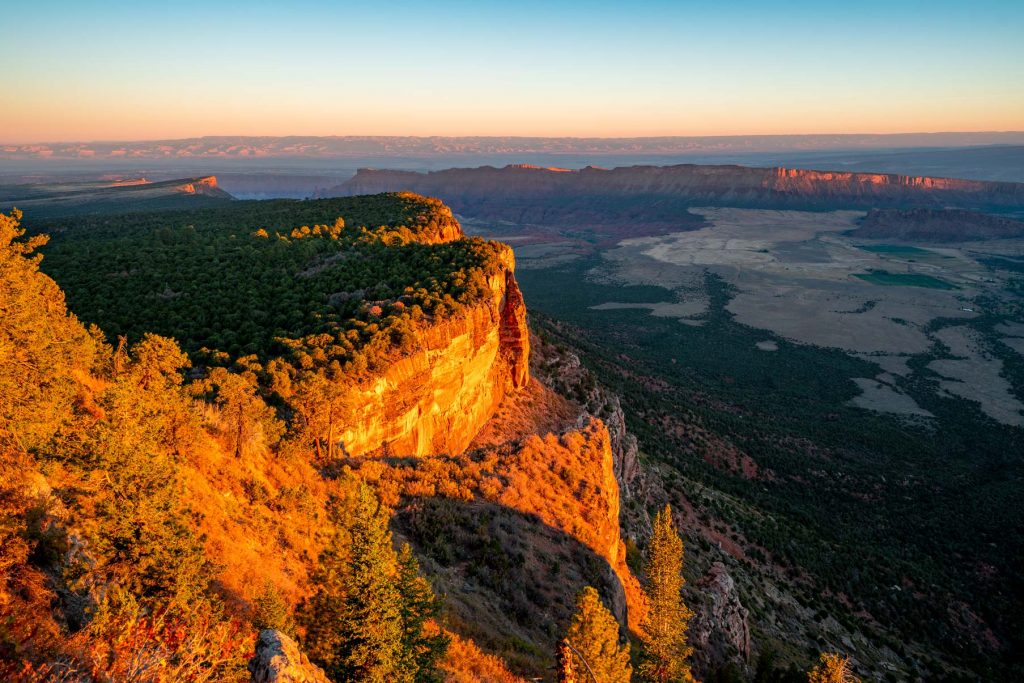
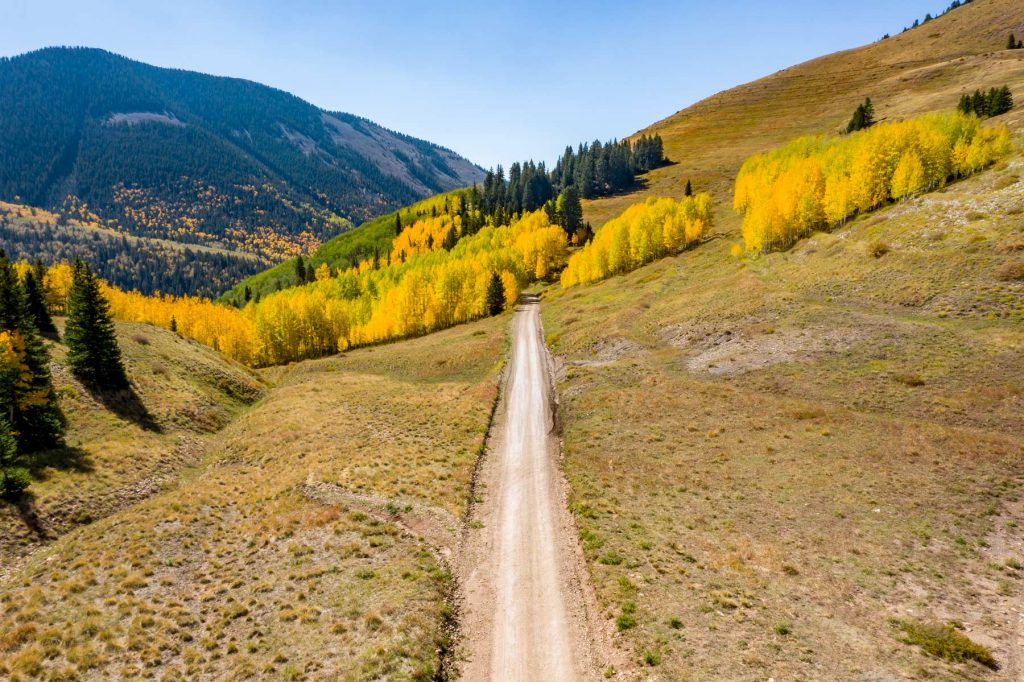
Nearby Attractions
- Zion National Park
- Capitol Reef National Park
- Bryce Canyon National Park
- Dixie National Forest
- Fishlake National Forest
- Arches National Park
- Canyonlands National Park
Summary | Leave us a Comment!
That’s a wrap folks! Hopefully you feel like you’ve got a good handle on your next trip to the Mant-La Sal National Forest. Please leave me a comment below and let me know if you have any questions or comments.
Hope to see you on the trails sometime soon!

Here’s Some Helpful Related Posts
- 16 EPIC HIKES in ZION NATIONAL PARK (+ Helpful Tips & Photos)
- ZION NATIONAL PARK: A (Very) Helpful Guide – Video, Photos, Locations
- 5+ EPIC UTAH NATIONAL PARKS ROAD TRIP (Photos + Video)
- 5 MIGHTY UTAH NATIONAL PARKS (Photos + Video)
- 35+ ROAD TRIP ESSENTIALS (You’ll Love + Packing List)
- 15 BEST FREE ROAD TRIP PLANNING Tools (& Apps) 2022
- Behold the Black Hills, America’s Most Magical Natural Wonder
- ALL 63 National Parks Ranked from Best to Worst 2021
- 10 Best National Parks Road Trips in America
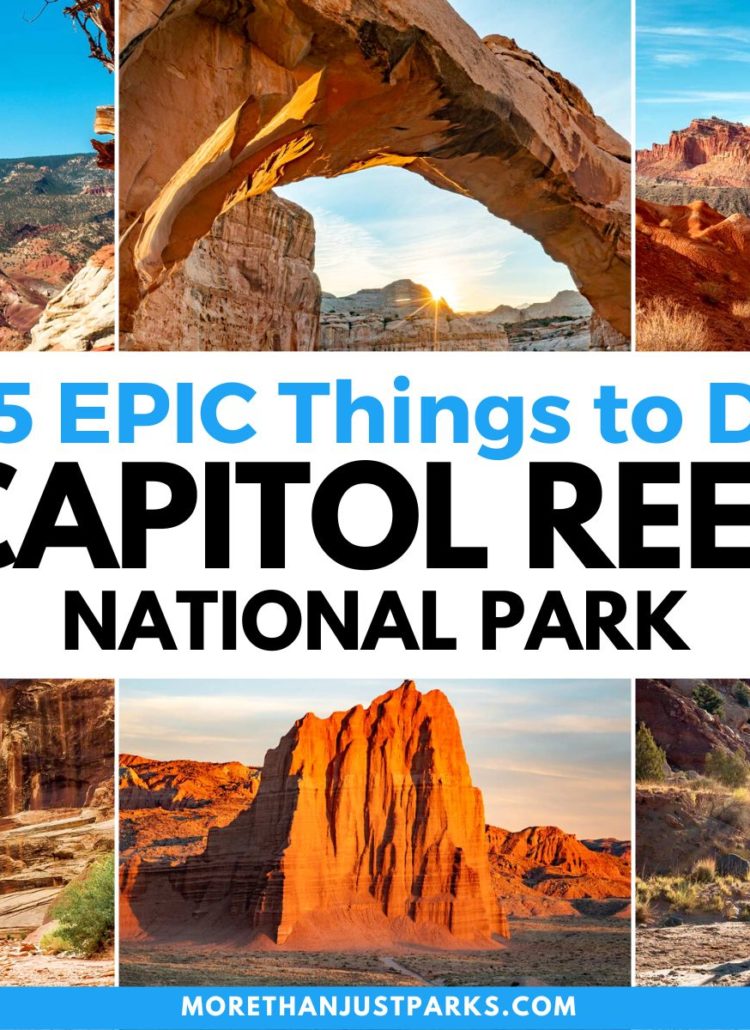
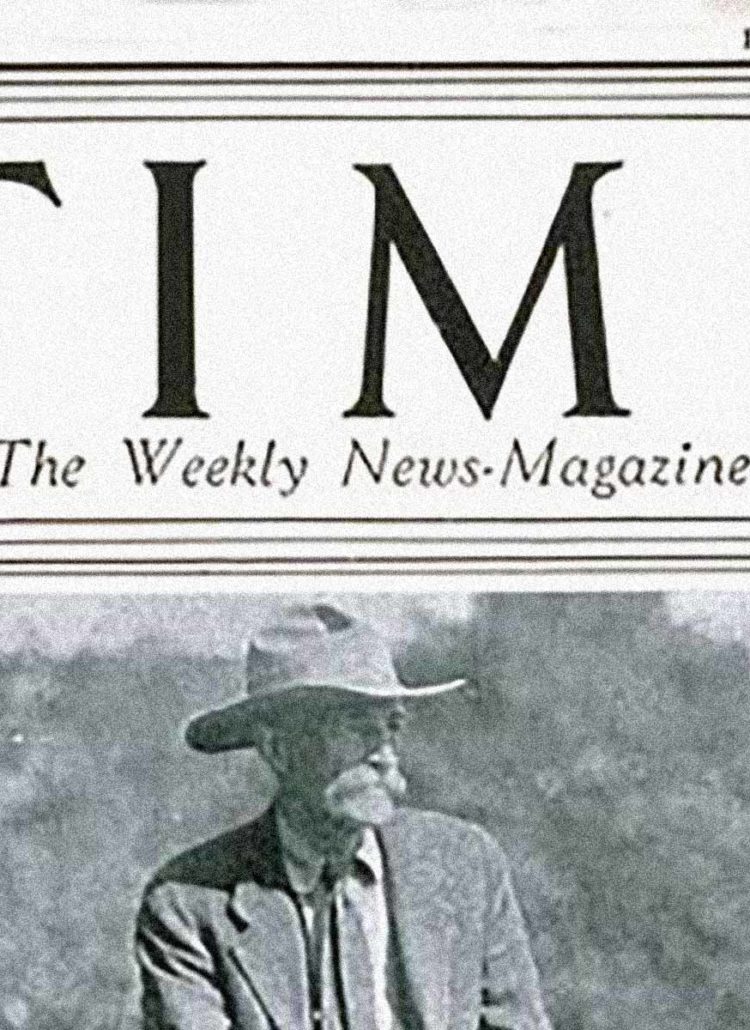



As if the breathtaking hoodoos and mesas weren’t interesting enough, there are DINOSAUR TRACKS in the Manti-La Sal! Family outing will be planned soon. Thank you so much about the high clearance vehicle requirements to access some parts; really helpful for my family van. We’re also going to check out the Native American Center. Sounds incredible. Thank you for highlighting Manti-La Sal.
Thanks so much, Allison! Most of the roads are passable but be sure to check before taking the van down unknown terrain 😉
The Bears Ears Education Center is a great stop to learn about the amazing cultural resources of the region.
Have a great trip!
Will
Beautiful video! It is a wonderful reminder of how diverse Utah is.
What campground is the one featured in the photo at the start of the camping section?
Thanks so much, Paul!
The campground in the photo is Porcupine Rim. One of the best campgrounds we have *ever* been to. The last bit of the road (1000yds or so) is a definite 4WD road FYI but the rest is manageable without.
Best,
Will
Great article. Articles like this is why these beautiful places are being over run with people. I’ve lived in moab all my life. Born here! Influx of people is the biggest impact on these lands hands down.
Want to keep places like this pristine? Be quiet about them
Hey Gavin,
Thanks for taking the time to share your perspective. I understand the frustrations that folks who love the outdoors are feeling lately about their hometowns and favorite spots seeing an influx of folks excited to visit them. I also think it’s important for folks to have the knowledge only long time residents can share.
I’m sorry to hear that Moab has changed so much during your time there. As with all great things, it was discovered and now folks want this little slice of heaven for themselves. I hear you and understand your perspective 100%.
The discovery of a great town is an age old problem we have yet to solve. Everyone wants to live in a beautiful place that speaks to who they are. However, by so many “new” folks moving in, it completely changes the feel and narrative of the town.
The fact is, we were all “new” once and even those that were born and raised in Moab (like yourself) probably didn’t have a say in the matter because they were kids — but there is clearly a deep sense of loyalty and pride in being a Moab native and now that the city has changed drastically it’s easy to cast blame on everyone “new” that is moving to the city in the same way that current locals did 20 years ago, or maybe their parents did before them.
Public lands are for sharing, thus the name “public”. It’s part of our great natural heritage and one of America’s greatest exports. I’m guessing at some point you’ve visited other areas and/or plan to do so in the future.
Rather than keep these places quiet it’s our belief at More Than Just Parks that the better course is to share them broadly and raise awareness about how to protect these incredible treasures.
I want you to know that I hear what you’re saying while also understanding the perspective of the folks that want to live the very life you were fortunate enough to enjoy in Moab. I hope that makes sense, and again — I am very appreciative of your input on living in Moab.
Best,
Will